Introduction
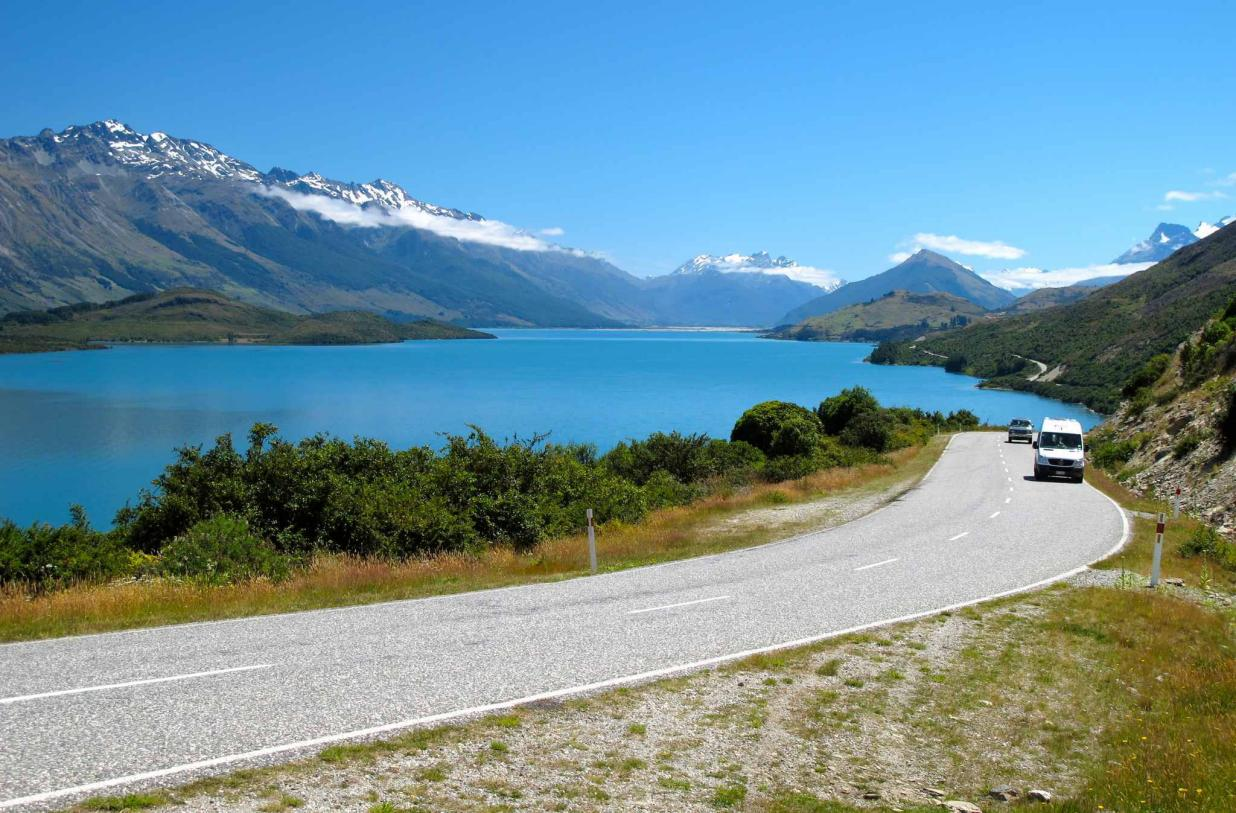
New Zealand, famous for its stunning landscapes and unique wildlife, is a paradise for travelers. The best way to experience its diverse beauty is through a self-drive adventure. From the geothermal wonders of Rotorua to the majestic fjords of Milford Sound and the vibrant culture of Wellington, every corner of New Zealand offers something spectacular. With well-maintained roads and clear traffic signs, driving here is both easy and enjoyable. So, pack your bags and set off on an unforgettable road trip through this incredible country!
Car Rental Tips
Book in Advance
Generally, we recommend that you make your reservation one month in advance so that you could choose the desired vehicle and date.
If you proceed directly to the car rental store without a booking, it is likely that the car you need might be unavailable.
If you are already a QEEQ diamond member, you only need 1$ to freeze your booking and make the rest of the payment before pick-up, which does not affect your credit card limit.
Required Documents
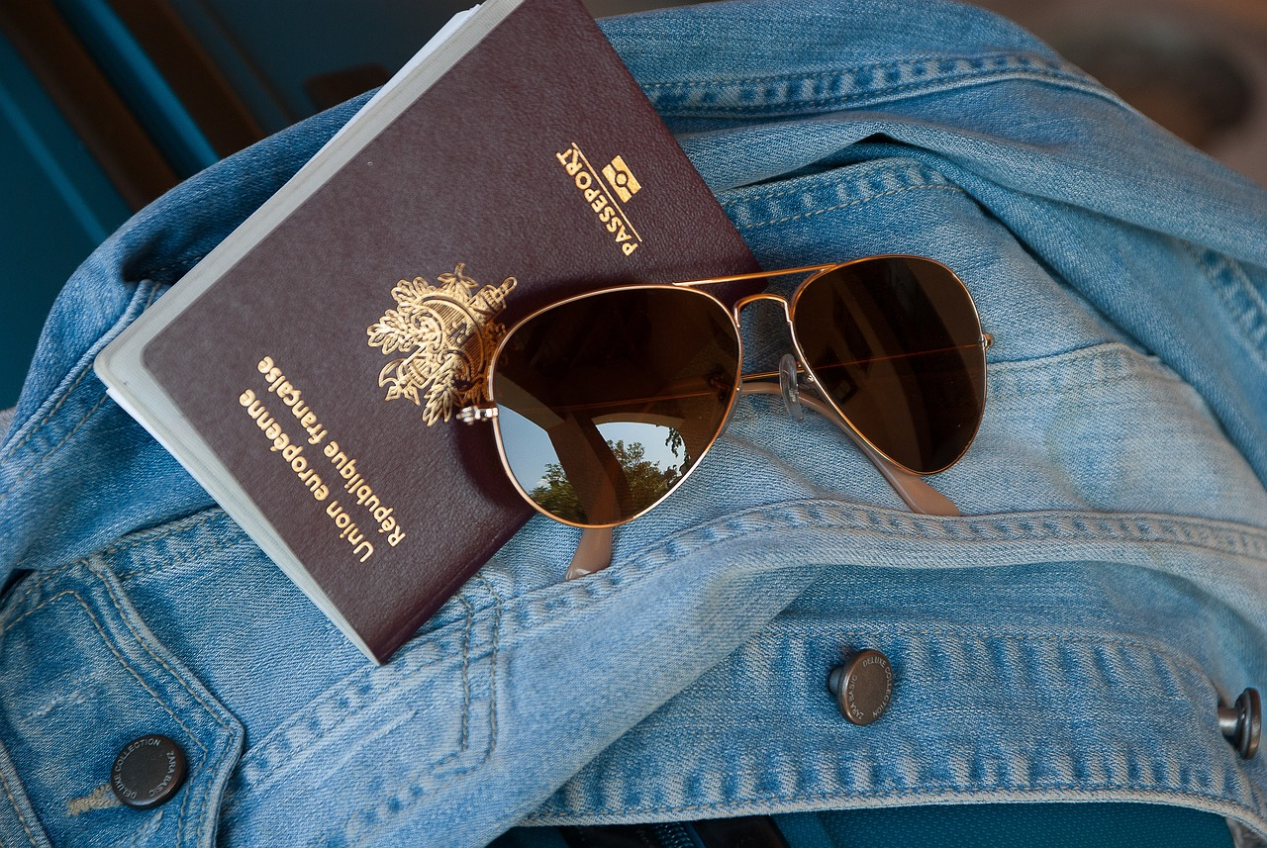
Passport, Driver’s License, IDP (Optimal), Credit Card
International Driving Permit (IDP) is highly recommended, which allows you to drive legally in countries that need one.
If it is inconvenient for you to apply an IDP, generate a free driver’s license translation on QEEQ.com (Japanese site only).
Tips: Please be aware that most rental companies require drivers to have held their license for at least one year. Additionally, some companies have age restrictions, and drivers under a certain age may need to pay a young driver fee.
Car Choices
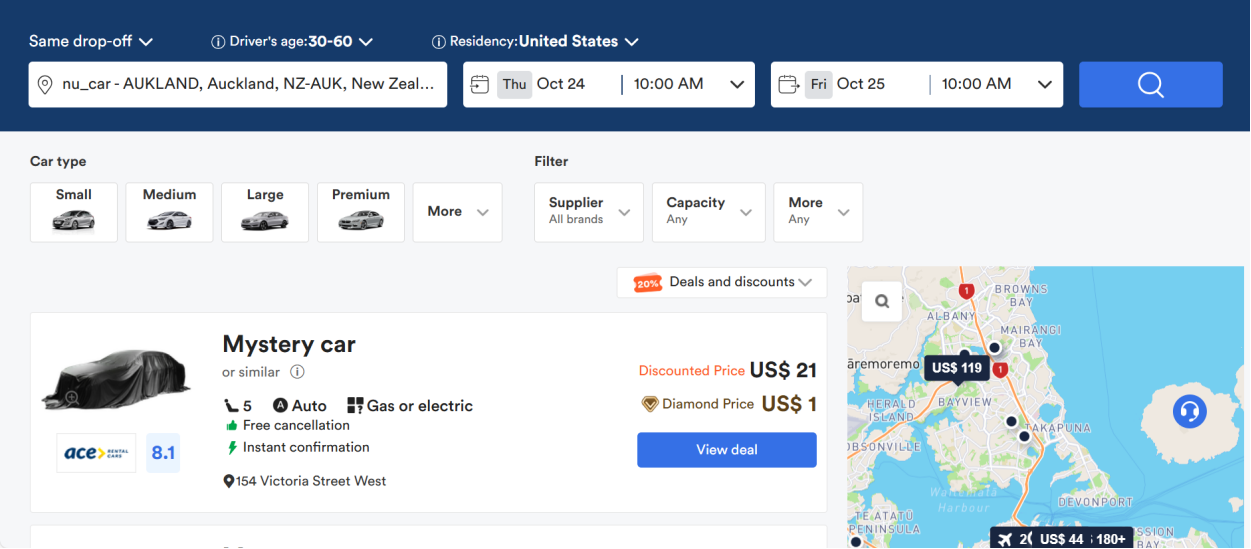
The choice of your car depends largely on the duration of your trip, passenger number, luggage amount and road conditions.
- City Driving for small groups (1-3 passengers)
If you are a couple, or travel with a friend or two, or if you travel alone, a reasonably priced small car would be a good choice.
Compact size cars have 4 to 5 seats. We recommend sparing one passenger capacity so you could relax and have more space.
- 4 to 5 passengers including children and elderly
Medium and large size cars are recommended. These models could still possess a fair mount of space with 2 to 3 suitcases. SUVs are suitable for hybrid road conditions. Eco-friendly cars such as the Prius could save your spend on gasoline. Choose what you need giving you peace of mind on long trips.
- Traveling in a group of 6 or more
It would be a wonderful experience to choose a van for everyone to have his or her own seat. These models accommodate a passenger capacity from 7 to 12 people. While it is noticeable that large cars cannot make quick and sharp turns. So we recommend renting two small or medium-sized cars if you spend a lot of time driving through towns.
Online Booking Process
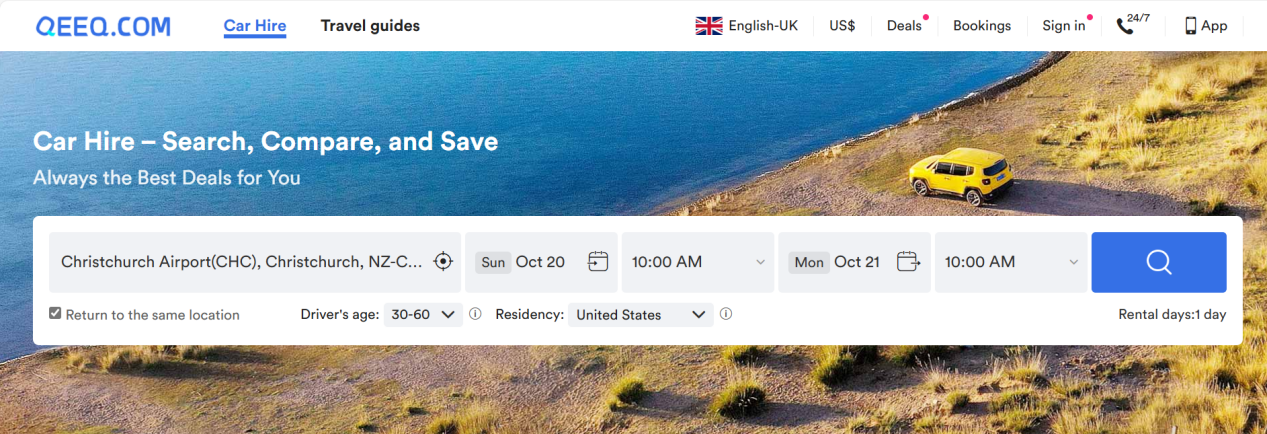
We are endeavoring to make your booking as convenient as possible. Enter our website QEEQ.COM, log in, enter the required information, and follow the instructions, you are free to rent your desired car.
Insurance
What Insurances Are Available?
*For Autopilot Cars:
- Insured: Protection for the person renting the car, including passenger accident insurance and personal accident insurance (PAI). This includes the personal safety of the driver, passengers, and their personal belongings.
- Automobile Insurance: protection for the vehicle of the renter. Collision Damage Waiver (CDW) is one example.
- Third-party Insurance: insurance that protects third parties other than the renter and the car rental company. Basic Third Party Liability (BTL) insurance, etc.
International car rental bookings will include the basic insurance required for car rentals: Vehicle Damage Coverage, Theft System, and Third Party Liability Insurance.
The deductible is the maximum amount of money you’re liable for in the event your rental car is damaged or stolen as long as you follow the conditions of your rental agreement. For example, the deductible is 1000 dollars, if the damage to the rented car is less than 1000 dollars, the customer pays; if the damage is more than 1000 dollars, the customer pays up to 1000 dollars; and the store’s insurance company pays for the part exceeding 1000 dollars.
Many travelers want more comprehensive coverage and purchase additional insurance. Personnel, vehicle and third-party coverage varies by insurance type. Here are some examples of common types of insurance (note: more checks means more coverage):
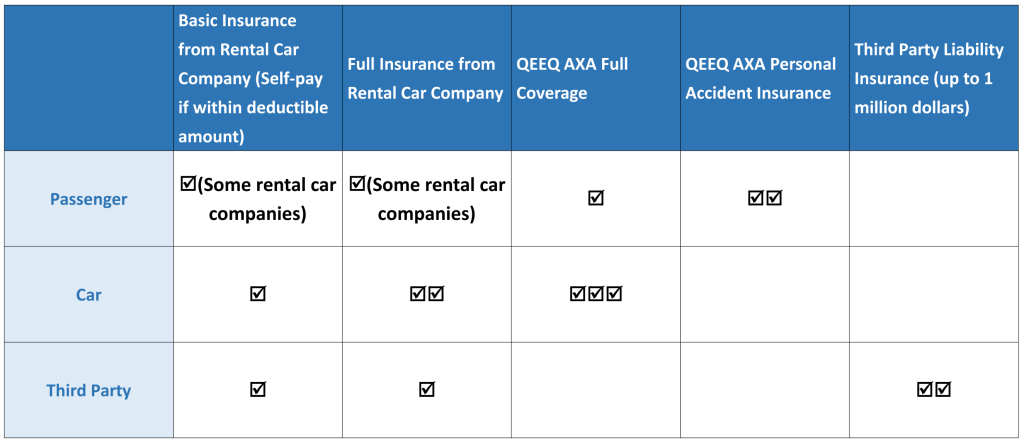
When and How to Purchase Insurance
There are two ways to obtain insurance: one is to purchase insurance when booking the car online; the other is to purchase insurance at the local store where the car is rented when picking up the car.
Generally, insurances provided by rental car companies usually has narrower coverage, higher premiums, so purchasing insurance online when booking the car is highly recommended.
How to Choose Insurance
If you are traveling with limited budget, it is better to choose the kind of insurance policy with the most comprehensive coverage. The main reasons are:
- Repairing fee for the car would probably be higher abroad.
- In case of an accident, the medical cost and compensation are very high.
- The wider the coverage, the less the troubles you would deal with, which saves tons of time and energy.
Taking automobile insurance as an instance, comparing to common insurance policies, the most comprehensive insurance coverage, including glasses, tires, chassis protection, and considerations for special road conditions such as sand and rocks, is very necessary, but basic insurance of car rental companies usually does not include full coverage as such.
Picking Up the Car
Check Before Departure
Before proceeding to the car rental shop, make sure you have brought with you all necessary documents for picking up the vehicle, and two international credit cards is recommended to ensure that there is enough credit limit for pre-authorization.
Proceed to the Car Rentals
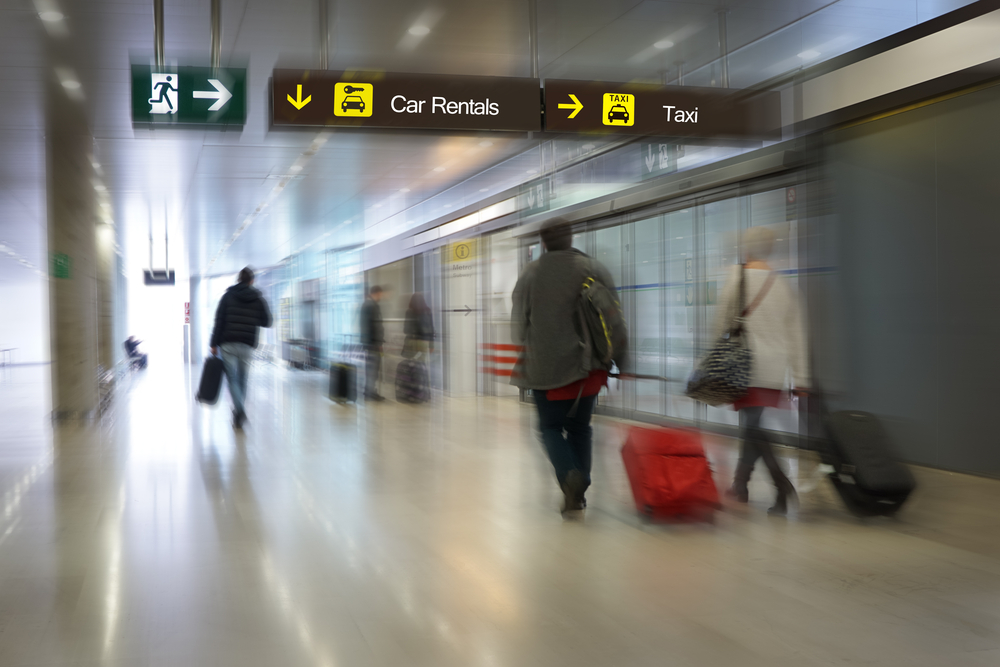
If there is a pickup store nearby, you could just walk there, following signs for airport rental cars.
If the rental car center is far away, there is usually a free shuttle bus bound for the rental car center. Shuttle buses run every 10 minutes approximately, so take the bus when you see the logo of your car rental company.
If the shuttle is not available, you can contact the car rental company and wait for staff member to pick you up at designated location. In case you have difficulty communicating with the store staff, please call QEEQ and we will assist you in English or other languages.
Inspect the Car

When you receive your reserved vehicle, inspect the bodywork for damage. At that time, it’s a good idea to document the entire process with your smartphone camera or take a picture of the dashboard. Because if you forgot to check the condition of your vehicle before departure, you may be charged for wronged damage repairs when you return it.
Payment
 Payment is due on the day of the rental unless you are paying online or purchasing a tour package.
Payment is due on the day of the rental unless you are paying online or purchasing a tour package.
Insurance is usually included in the rental price, but some car rental companies offer paid options for more comprehensive coverage.
Last but not least, keep all contracts and documents safe for possible further usage. Once you have received your keys, check the seat heights, mirror positions, secure child seats, and then you are ready to go!
Traffic Rules and Signs
About Self-Driving Across New Zealand’s North and South Islands
When planning a self-drive trip across New Zealand’s North and South Islands, there are a few important things to keep in mind, especially regarding car rentals. Rental companies have different policies, generally falling into two categories:
- Returning Vehicles Before Ferry Crossings
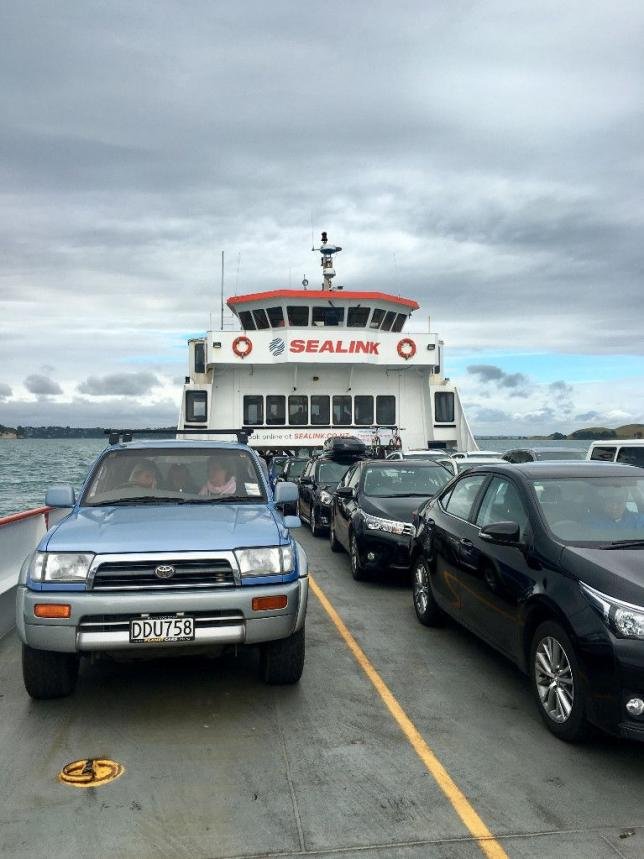
Some rental companies require you to return your vehicle at the ferry terminal on one island and pick up a new vehicle at the terminal on the other island. The rental period for each island may have specific requirements, such as a minimum of three days. Most rental companies in New Zealand, like Hertz and Europcar, operate this way.
When booking, make sure to select the option indicating that you need to cross between the North and South Islands by ferry. Provide details about your crossing time and location. The rental company will arrange for a vehicle to be available for you on the other side based on this information.
Note: Book your ferry tickets in advance. If you haven’t confirmed your crossing details yet, try to provide this information to the rental company at least seven days before your rental period begins to ensure a smooth transition.
- Taking Vehicles on Ferries
Some rental companies, such as Ezi Car Rental, allow you to take their vehicles on ferries. This can be more convenient as you won’t need to switch cars between islands.
To ensure you have a smooth journey, especially during peak travel seasons, it’s a good idea to book your ferry tickets for your vehicle in advance. This way, you won’t risk arriving at the terminal and finding no tickets available.
Traffic Rules
- Drive on the Left
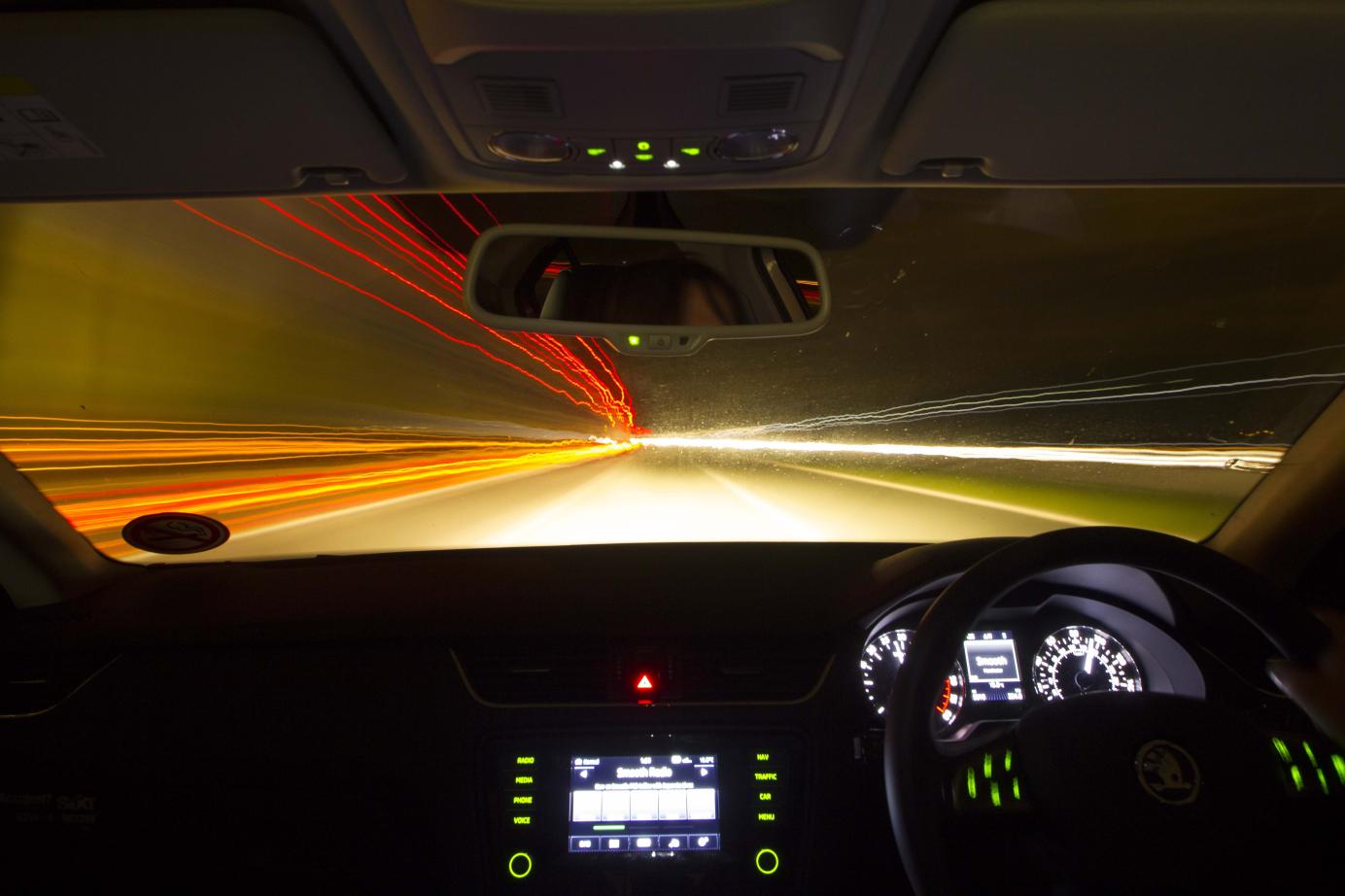
In New Zealand, vehicles drive on the left side of the road, and the driver’s seat is on the right. If this is different from your home country, it’s the first thing you should get accustomed to.
- Pedestrian Priority

Pedestrians always have the right of way. Vehicles must yield to pedestrians at all times.
- Wear Seat Belts
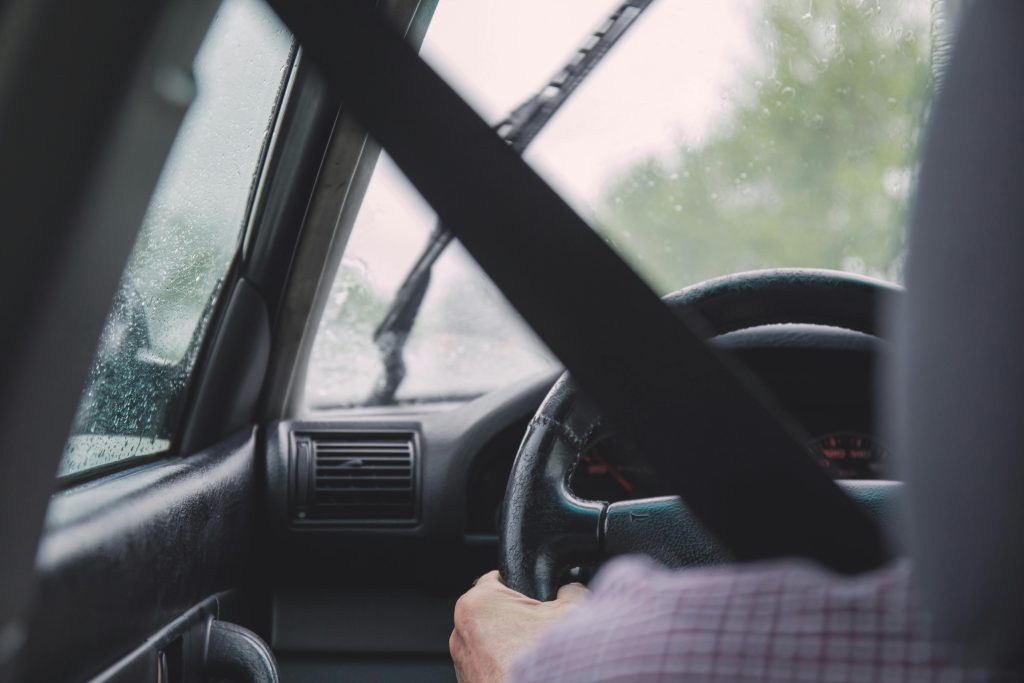
Seat belts must be fastened not only by drivers but also by passengers. Drivers will be fined for driving without seat belts or allowing passengers to travel without seat belts.
In addition, Children under the age of 7 must be secured in an approved child safety seat.
- No Mobile Phones

Drivers are not allowed to use mobile phones while driving unless the phone is completely hands-free or securely mounted in the vehicle. Even then, only brief touches are permitted. Reading or sending texts while driving is illegal.
- Yield to Emergency Vehicles
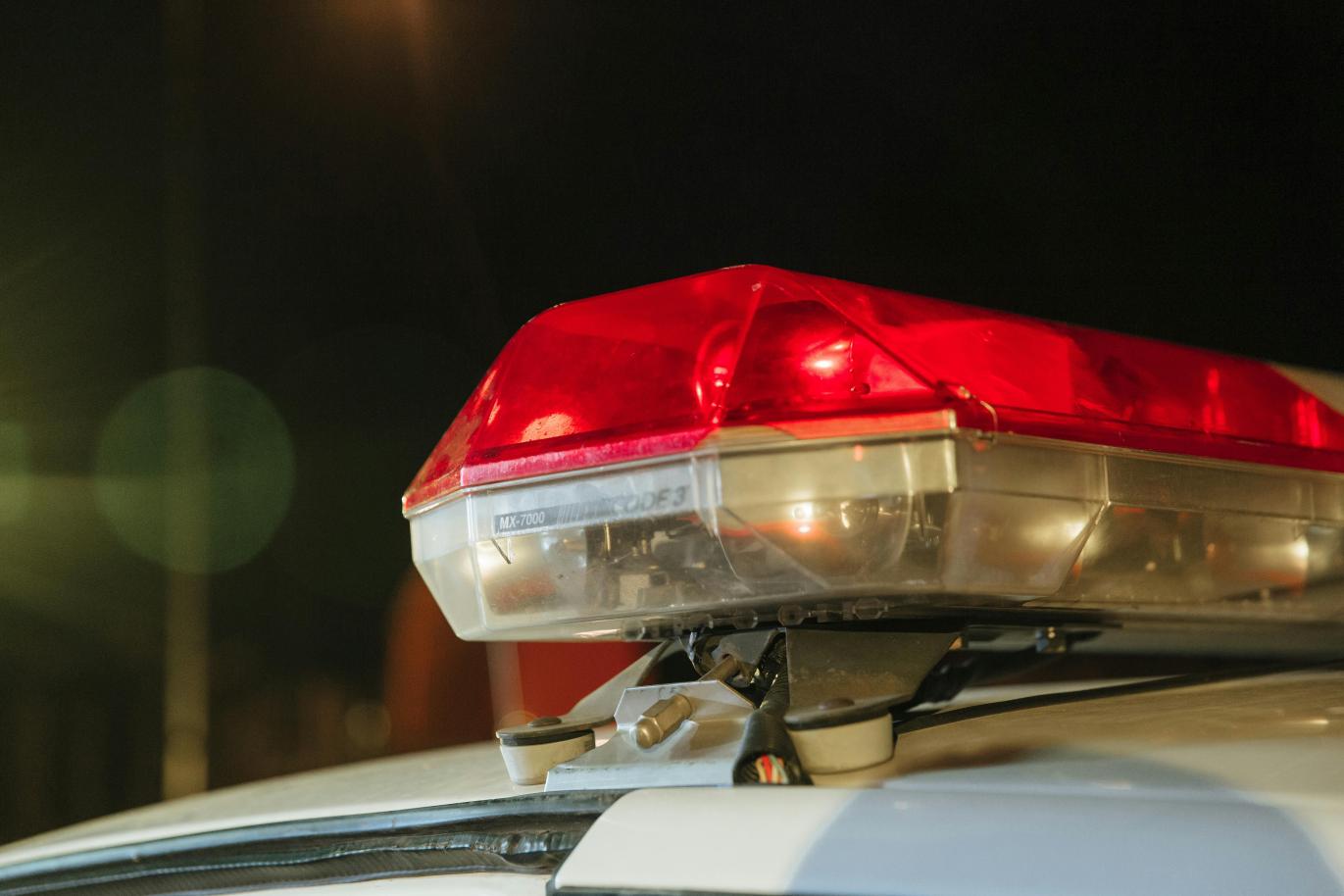
When you see police cars, fire engines, or ambulances, you must pull over to the left side of the road or stop to let them pass.
- Overtake Safely
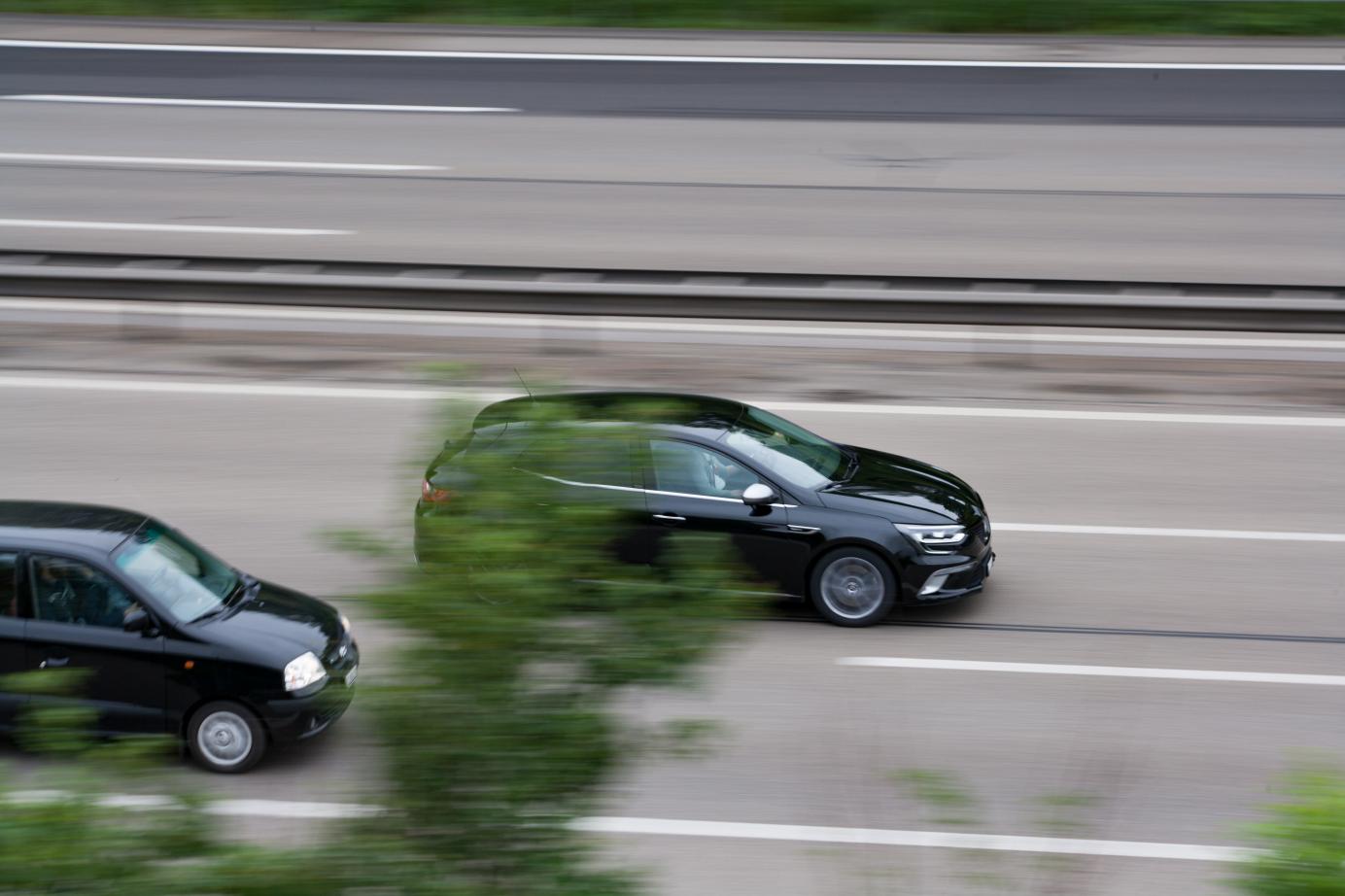
Most roads have only one lane in each direction. Use designated passing lanes to overtake other vehicles and do so cautiously.
- Respect Right of Way
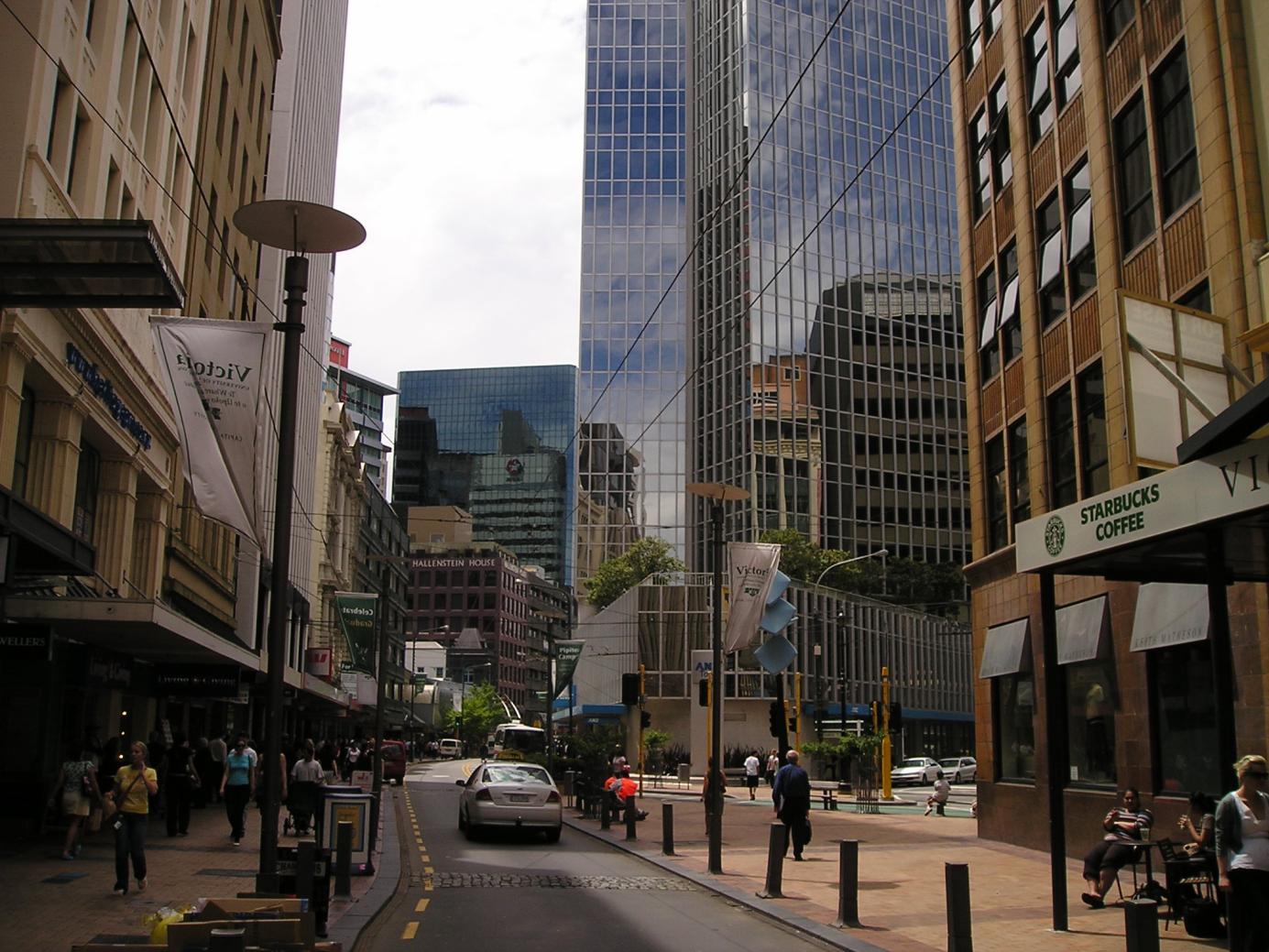
Right of way is taken very seriously in New Zealand. Whether or not there are signs, the rules are clear: turning vehicles must give way to those going straight, minor roads must yield to main roads, and vehicles entering a roundabout must yield to those already in it. New Zealand drivers strictly adhere to these rules and may not slow down for vehicles that do not have the right of way. Always be mindful of right of way to avoid accidents.
- Speed Limits
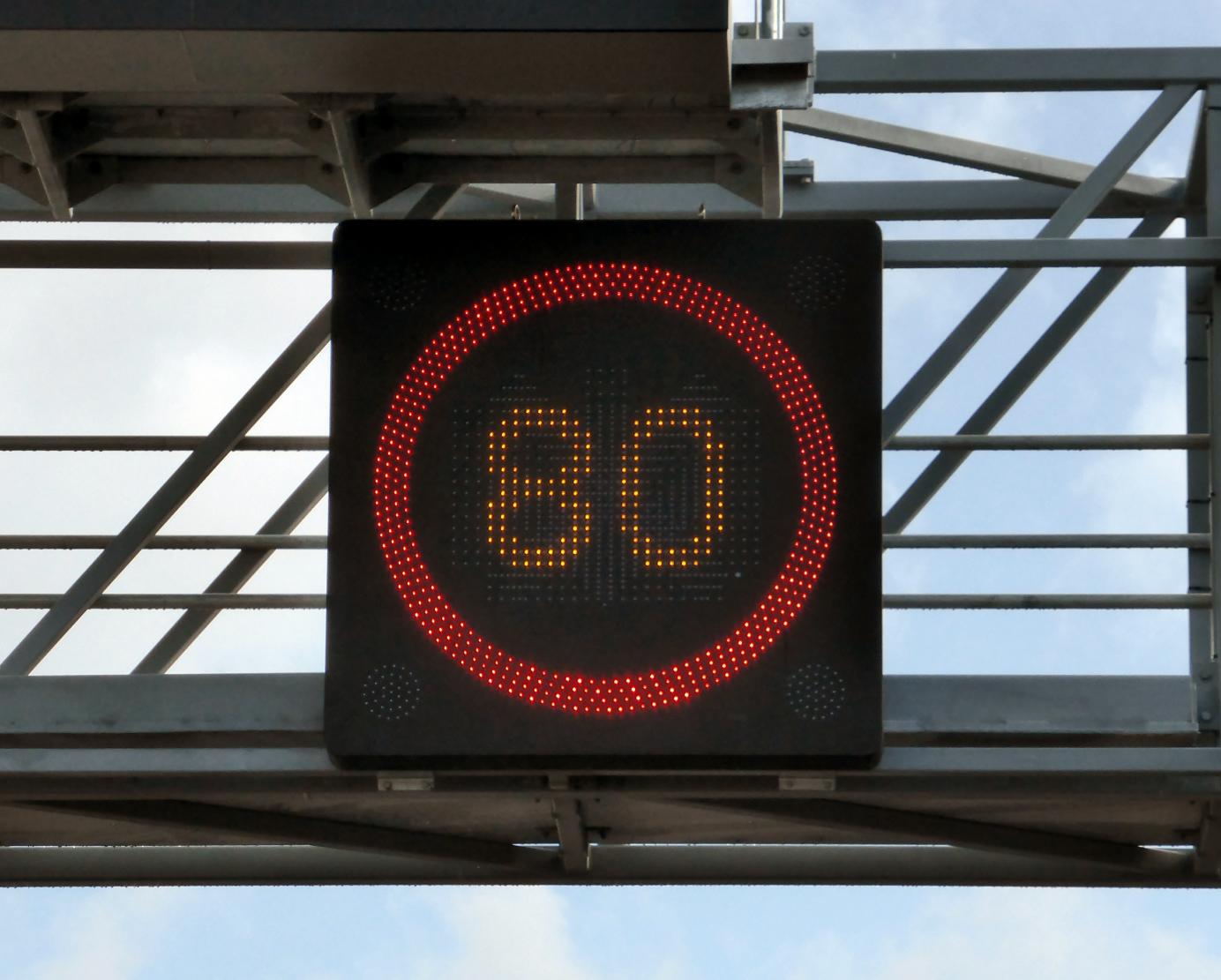
The maximum speed limit on open roads is 100 km/h, and in urban areas, it is 50 km/h unless otherwise indicated. Always adjust your speed according to road conditions.
Signs
- STOP Sign

When you encounter a STOP sign, you must come to a complete stop behind the solid line. Even if there are no other vehicles or pedestrians, you must stop for at least three seconds, check for traffic and pedestrians, and proceed only when it is safe.
- Give Way Sign
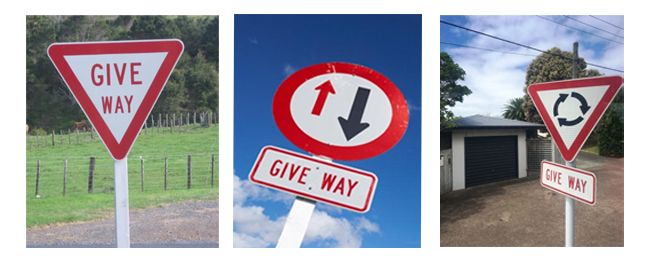
When you encounter a GIVE WAY sign, you must slow down and be prepared to stop. Yield to other vehicles and pedestrians, and proceed only when it is safe. GIVE WAY signs are commonly found at intersections and roundabouts: at intersections, vehicles on minor roads must yield to those on main roads, and turning vehicles must yield to those going straight. At roundabouts, you must look to your right and give way to traffic coming from the right.
- Speed Limit Sign
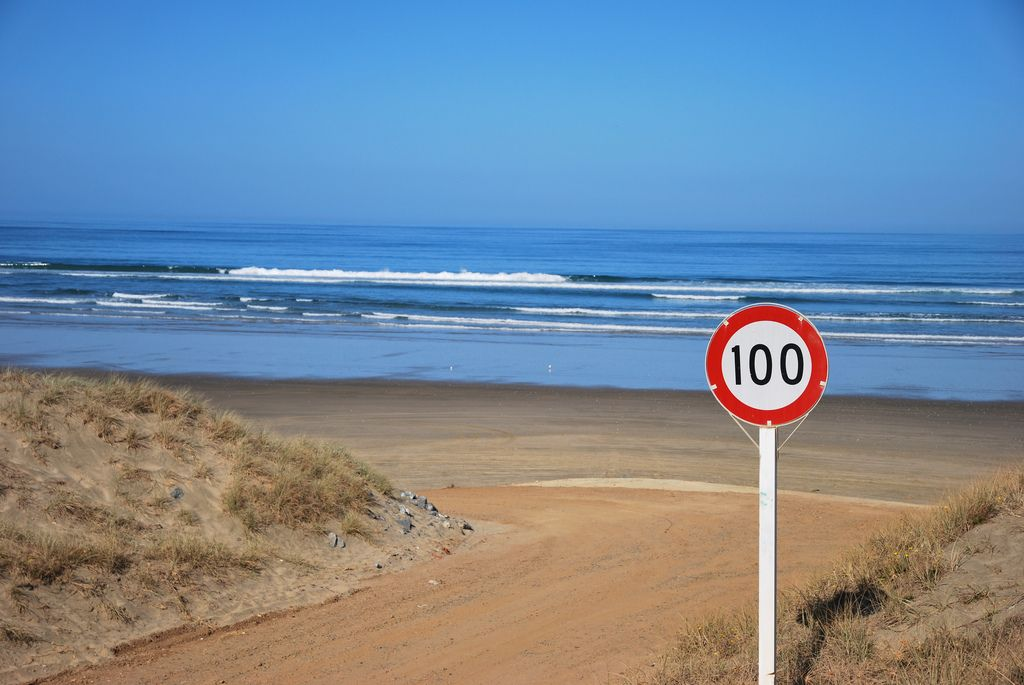
New Zealand has varying speed limits depending on the area. Generally, the speed limit is 100 km/h on rural roads and 50 km/h in urban areas. However, due to road conditions, weather, or traffic, you may need to drive below the posted speed limit. Some roads have specific speed limits for curves or steep sections, so always adjust your speed according to the signs.
- One-Lane Bridge Sign
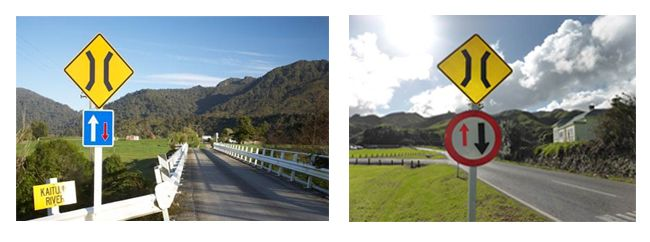
One-lane bridges are common in New Zealand. When you see a one-lane bridge sign, one side of the traffic must yield to the other. The specific signs will indicate which side has the right of way. A red arrow means you must give way, while a black arrow means you have the right of way. If there is no oncoming traffic, you may proceed across the bridge.
- Passing Lane Sign
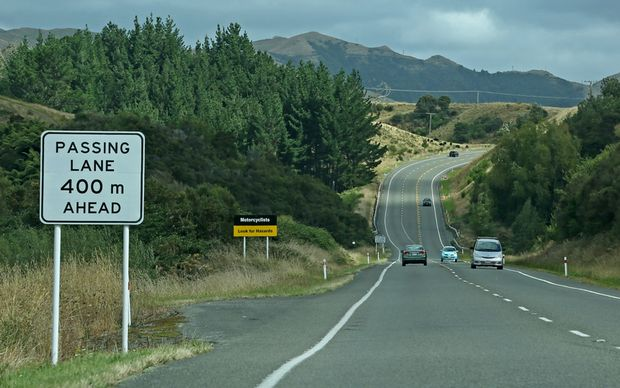
New Zealand roads are often single-lane in each direction. You can only overtake in designated passing lanes, indicated by PASSING LANE signs. These signs usually appear a few kilometers before the passing lane. Signal for at least three seconds before overtaking. Vehicles not overtaking should move to the left lane and not occupy the passing lane.
- One-Way Street Sign
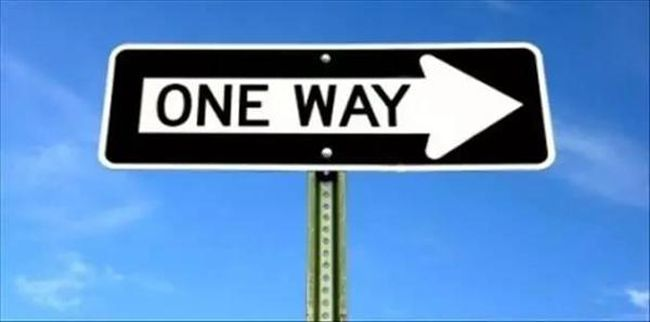
Many urban streets in New Zealand’s major cities are narrow and often one-way. It is advisable to familiarize yourself with the road layout and one-way street signs before entering the city.
- Other Common Signs
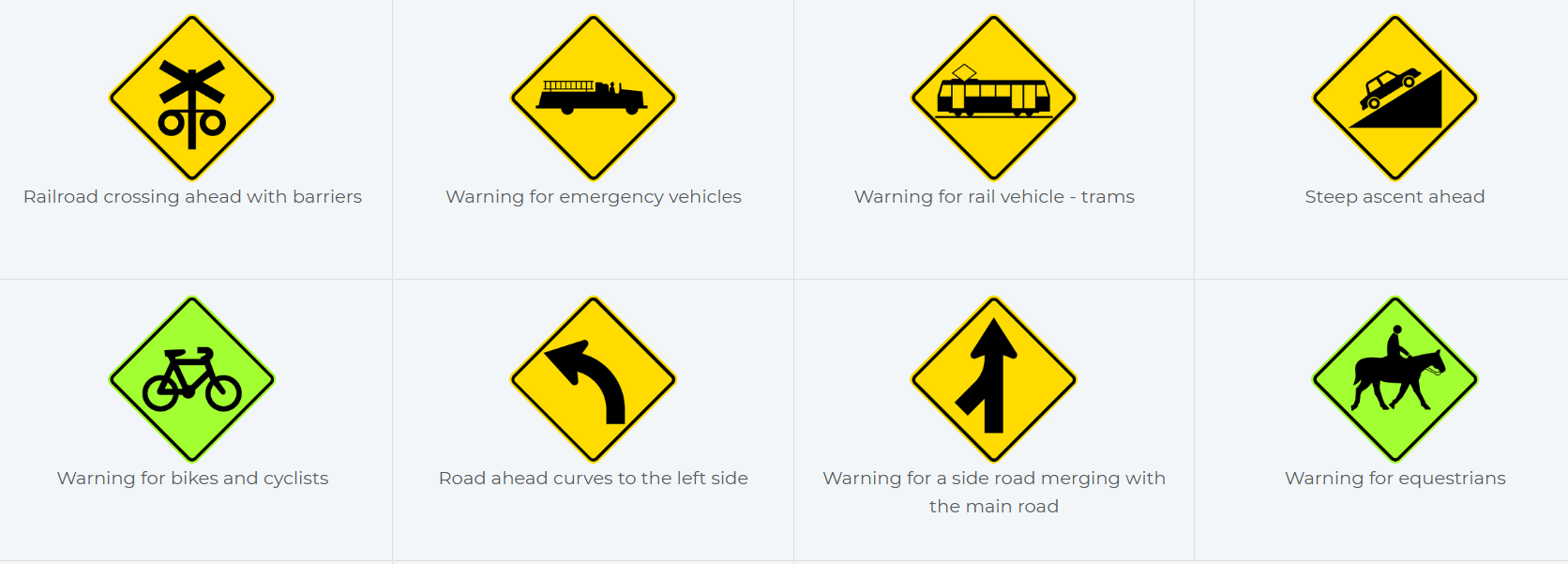
Familiarize yourself with other common road signs in New Zealand, such as STOP signs, pedestrian crossings, and school zones. Each sign provides important information to ensure your safety and the safety of others on the road.
Road Conditions and Toll Payments
Road Conditions
- Single-Lane Highways
Unlike many countries, New Zealand’s highways are mostly single-lane in each direction. Dual carriageways are typically found only near major urban areas and key transport routes, such as those leading to Auckland, Wellington, and major ports.
- Unpaved Roads
Avoid unpaved gravel roads whenever possible. If you must drive on them, be aware that these roads can be very narrow. Always keep to the left, reduce your speed, and be prepared to stop or slow down significantly when passing oncoming vehicles. Dust can impair visibility, and loose gravel can damage your windshield, so drive cautiously.
- Hand Signals
If you see someone on the roadside extending one arm forward and moving it up and down, this indicates a hazard ahead. Please drive carefully.
Toll Payments
- Toll Roads
Most highways in New Zealand are toll-free. However, there are a few exceptions, such as the Northern Gateway Toll Road north of Auckland and the Tauranga Eastern Link Toll Road. The tolls range from NZD 1.80 to NZD 2.30 per trip.
- Advance Notice
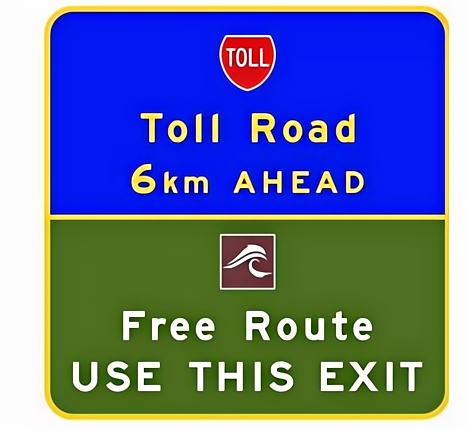
Before entering a toll road, there are usually signs indicating the toll and alternative routes.
It’s advisable to check your route in advance and set your GPS to avoid toll roads if desired. If you must use a toll road, ensure you pay the toll promptly.
How to Pay
- Electronic Tolling
Unlike manual toll booths, New Zealand uses electronic tolling to speed up traffic flow. There are no toll booths; instead, cameras automatically capture your vehicle’s license plate. You can pay the toll up to 180 days in advance or within five days after using the toll road.
- Payment Methods
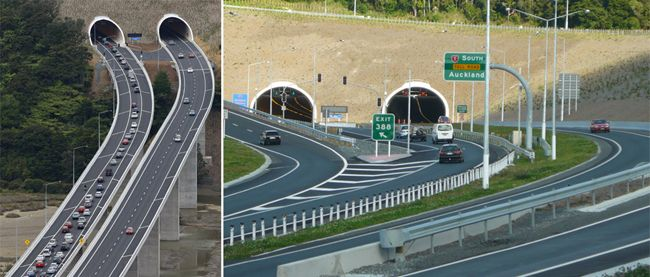
Common payment methods include using an automated kiosk by the roadside, paying online, or via phone. If you fail to pay within 5 days, you will receive a notice with additional administrative fees and fines.
Fueling
Fuel Prices
New Zealand’s fuel prices are aligned with international rates, ranging from approximately NZD 1.8 to 2.2 per liter (about USD 1.1 to 1.4 per liter, 1 NZD = 0.61 USD). Diesel is typically 10%-15% cheaper than gasoline.
Fuel Brands
There are many fuel brands in New Zealand, including BP, Mobil, Z Energy, Challenge, Caltex, and Alliance. Prices may vary slightly between brands, with BP and Z often being recommended. Generally, fuel is cheaper on the North Island compared to the South Island, and in cities compared to tourist areas.
Which Fuel to Use
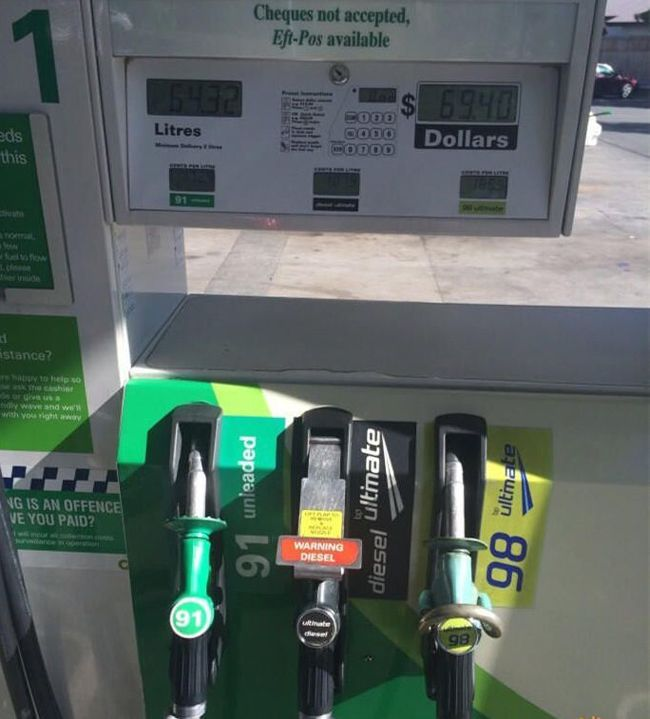
Gasoline in New Zealand is typically available in 91, 95/96, and 98 octane ratings. The higher the number, the better the quality and the higher the price. Follow the recommendations on your car’s fuel cap or in the vehicle manual. If unsure, ask the rental company staff when picking up your car. Generally, petrol cars use 91 unleaded (green nozzle), while diesel cars use diesel (black nozzle). If you accidentally use the wrong fuel, contact the rental company immediately for assistance.
Self-Service Fueling
Most fuel stations in New Zealand are self-service and accept both credit cards and cash. The basic process is as follows:
- Park your car next to the pump and select the fuel type.
- Remove the nozzle, insert it into the fuel tank, and squeeze the handle to start fueling. The screen will display the amount and cost.
- Once the tank is full, the handle will automatically stop, or you can release the handle when the desired amount is reached.
- Return the nozzle, close the fuel cap, and note the pump number.
- Go inside the station store, inform the staff of the pump number, and pay with a card or cash.
Credit Card Self-Service
In some remote areas, fuel stations may not have staff, and you will need to use a credit card for self-service fueling. Insert your credit card into the reader, follow the on-screen instructions to enter your PIN, and then proceed with fueling. After fueling, return to the reader to print your receipt. Note that you may receive a notification for a pre-authorization charge, which will be adjusted to the actual amount after fueling.
Fueling Tips
- Fueling in Remote Areas
New Zealand is vast with many remote areas where fuel stations can be scarce and fuel prices higher. It’s advisable to fill up your tank before embarking on long drives.
- Keep Your Receipt
Always ask for a receipt after fueling, as some stations only provide it upon request.
- Pay Before You Drive
Ensure you pay for your fuel before starting your vehicle. Failing to do so could result in legal action.
Parking Guidelines
Where to Park
- Public Parking Lots
Shopping centers and large supermarkets usually have dedicated free public parking lots. Tourist attractions and busy areas typically have paid parking. Parking is generally easy outside of city centers and popular cities like Auckland, Wellington, and Queenstown.
- Street Parking with Pay Stations
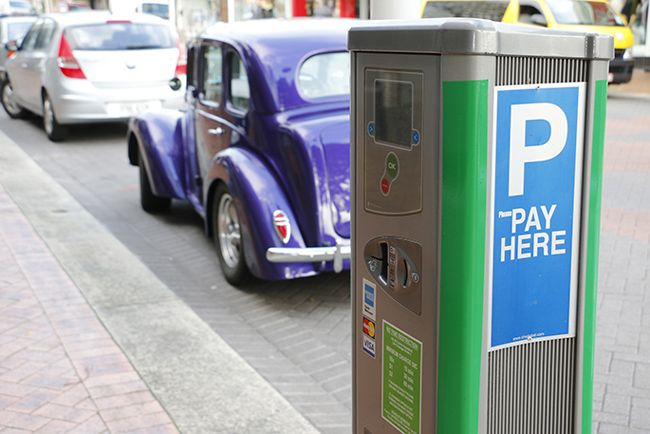
Street parking with “PAY HERE” signs requires payment, usually free at night. Check the specific time periods for charges.
- Time-Limited Free Parking
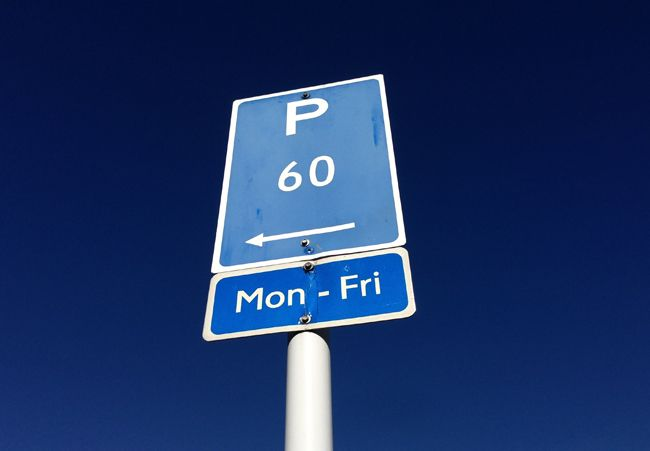
There are many free parking areas with time limits, marked with signs like P5, P10, P30, P60, indicating the number of minutes you can park for free. For example, a P60 sign means you can park for free for 60 minutes from Monday to Friday. Parking attendants may mark your tires, and you will be fined if you exceed the time limit.
Where Not to Park
- Restricted Areas
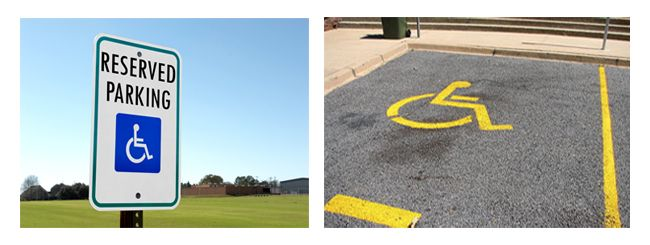
Do not park in disabled spots, building entrances, near fire hydrants, or bus stops.
- No Parking Signs
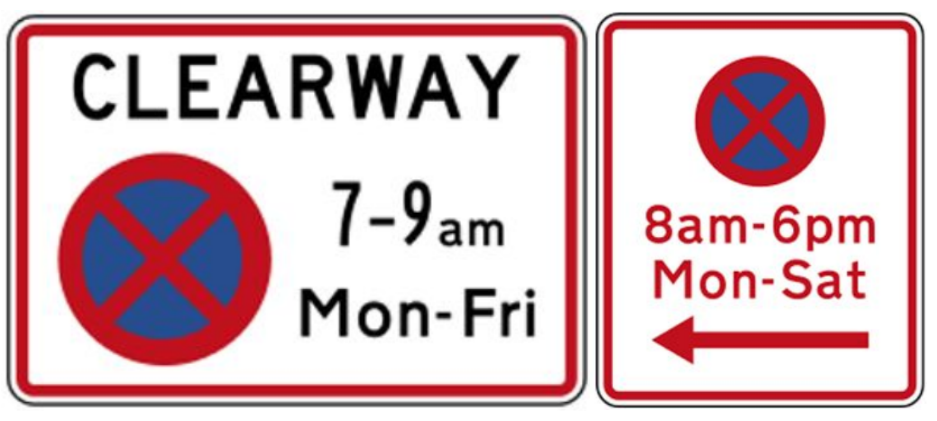
Pay attention to no parking signs. For example, a sign might indicate no parking from 7 AM to 9 AM on weekdays. Violating these rules can result in fines and towing.
- Yellow Lines and Private Spaces
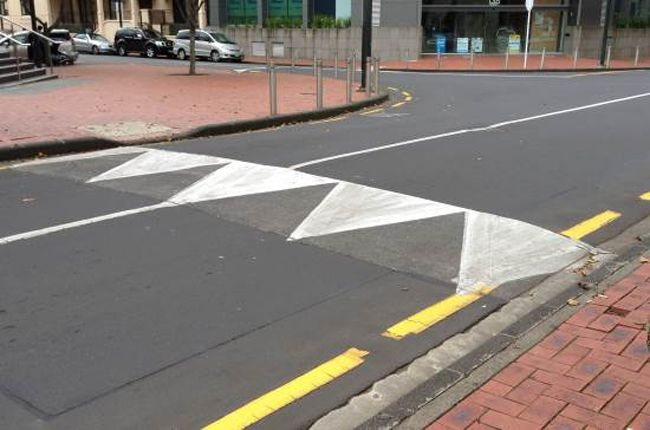
Do not park on roads with yellow lines or in private spaces marked with “TAKE AWAY.”
How to Pay for Parking
- Street Parking Meters
Street parking fees vary from NZD 3 to 8. You can pay with credit cards or coins. The process is:
- Insert coins/swipe card
- Select duration
- Confirm
- Print ticket
- Place it on your dashboard
- Parking Lot Payments
Parking lots may have self-service or staffed payment options. For self-service:
- Take a ticket at the entrance
- Park your car
- Pay at the machine before leaving
- Insert the ticket at the exit gate to leave
Always keep your parking ticket with you and do not leave it in the car.
- Parking Tips
Plan your parking in advance based on your itinerary to save time and money. Avoid restricted areas and ensure your parking ticket is visible on the dashboard. If you lose your ticket, you may be charged the maximum daily rate.
Accident Handling
If you are involved in a traffic accident, do not panic. Check whether the passengers are injured, help yourself and seek help from passersby. Emergency contacts are available at any time.
- Emergency services (police, fire, ambulance): 111
- Embassy Numbers by Country: Embassies and consulates around the world – EmbassyPages.com
- Roadside Assistance Numbers:
AA (The New Zealand Automobile Association Inc.): 0800 500 222
NZRA (New Zealand Roadside Assistance Limited): 0508 697 623
- You can also call your car rental company:
ACE Rental Cars: 0800 502 277 / +64 9 367 6350
AVIS: (64) 9-379 2650 / 09 373 5830
Alamo: 98703330
Apex: (09) 307 1063 / 0800 737 009
Autounion: 0064 99490944
Bargain Rental Cars: 0800 566 701 / 0800 566 701
Budget: 09 976 2270
CARWIZ: 64211802323
Discount car rentals: 0800 1795 1795 / (+64) 9 275 4085
Dollar: 0800243789
Drive nz: 0800 374836
Ezu: 0064-221825752 / +64 220953795
Europcar: +64 (0) 9 3795080
Ezi: +64 9 377 0867 / 0800 545 000
GO Rentals: +64 9 525 7321
Great rentals: 0064 95800588 / 0064 276884888
Hertz: 09 3676350
MODE: +64 09 373 3925
Routes: 6409275006
SCOTTIES: +64 9 3033912
SIXT: +64-98694666
SNAP: +64 800288699 / 6492752438
TOKYO RD RENTALS: +64 2109140101 / +64 211579864
Thrifty: 0800737070
YESAWAY: +64 95800588 / +64 276884888
Yes rentals: +6434202878 / +6434202878
Here are the steps to handle different types of accidents:
Minor Collisions
- Ensure everyone’s safety.
- Move the vehicle to the side of the road to avoid obstructing traffic.
- Call 111 to report the accident.
- Take photos or videos of the vehicle’s condition.
- Have the police document the accident and keep the accident report.
- Contact the rental company and your insurance provider.
Vehicle Break-Ins or Theft
- Call 111 to report the incident.
- Have the police document the incident.
- File an insurance claim.
- Verify the information.
- Receive compensation.
Vehicle Breakdown
- Open the car’s trunk and hood.
- Hang a white object on the door handle to signal for help.
- Call the rental company.
- The rental company will dispatch staff for towing or repairs.
- If the rental company cannot resolve the issue, ask the police for towing assistance. Repair costs can be high, so having full insurance is important.
Car Return Process
Important Reminders
After your enjoyable road trip, it’s essential to return the vehicle on time. If you have any questions or need assistance, you can contact the 24-hour customer service hotline.
Car Return Tips
- Refuel Before Returning
If your rental agreement requires a full tank upon return, make sure to refuel within 5 kilometers of the drop-off location and keep the receipt to show the rental staff.
- Keep the Car Clean
Return the car in a clean condition to avoid cleaning fees. Note that smoking in the car may also result in additional charges.
- Reconcile the Fee
When you return the car, the staff will inspect it and provide a final invoice. Carefully review the invoice and address any discrepancies immediately or contact customer service for clarification.
- Keep the Contract and Document
Retain the rental agreement and receipts after returning the car for future reference.
Early or Late Return
- Early Returns
Returning the car early usually does not result in a refund for unused days.
- Late Returns
If you need to return the car late, call the rental location in advance to get approval and confirm any additional charges.
After-Hours Returns
If you can’t return the car during business hours, check if the rental location allows after-hours returns. If permitted,
- Park in the designated area
- Lock the car
- Take photos of the fuel gauge, odometer, and car exterior
- Drop the keys in the key/drop-off box
Note that you are responsible for the car until the rental location reopens. To avoid issues, it’s best to return the car when staff are present.
Help after Trip
Traffic Citation
- Unexplained Charges After Returning Home
If you notice unexplained charges on your credit card after returning home, it might be due to traffic violations that the rental company paid on your behalf. These charges often exceed the actual fine amount because they include administrative fees charged by the rental company. If you’re unsure about the violation details, you can contact QEEQ customer service for assistance.Traffic violations in New Zealand are strictly enforced, and fines can be substantial. It’s advisable to adhere to all traffic regulations.
- Methods for Paying Fines
Camera-Detected Violations
If a traffic violation is captured by a road camera, the rental company will contact you, charge your credit card, and provide a receipt.
On-the-Spot Violations
If a violation, such as speeding, is detected while driving, the police will ask you to pull over, present your driver’s license, and perform a breathalyzer test. The officer will issue a fine, which must be paid within 28 days. You can pay by calling the designated number 0800 4 FINES, providing your credit card information, or by visiting the website listed on the fine to pay online. Alternatively, you can pay in person at designated locations available in major towns.It’s wise to review your route before traveling to identify any toll roads or bridges and understand common traffic violations. If you receive a fine, it’s best to pay it promptly to avoid late fees, which can be several times the original fine amount.
- No Violations During Rental Period
If there are no violations during your rental period, the deposit will typically be refunded to the primary driver’s credit card within a month.
Insurance Claim
If you bought a full coverage insurance, you would receive a fast claim settlement. The following documents should be prepared:
- Passport
- Driver’s License
- Credit Card Checkback History
- The Car Rental Contract
- Car Damage Deduction Bill
For more detailed information, check the terms and conditions of insurance company: term (qeeq.com)
Classic Routes
North Island road trips
- Auckland
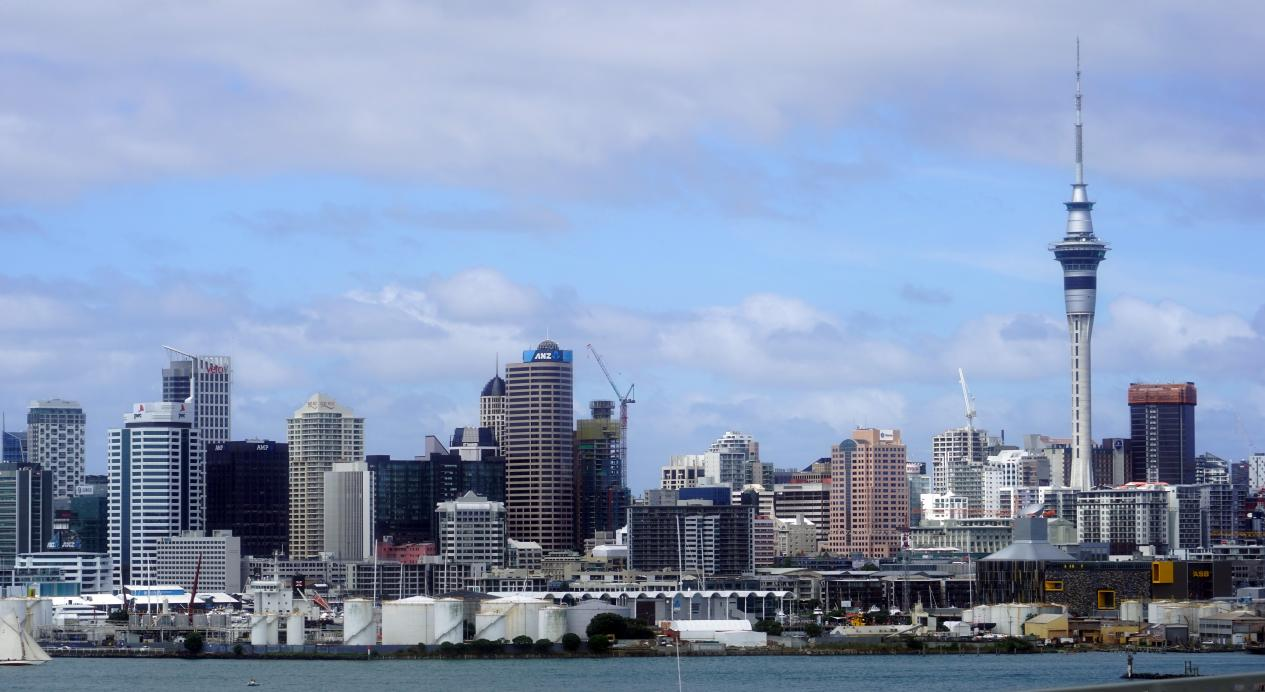
Auckland, New Zealand’s largest city, is a vibrant blend of urban sophistication and natural beauty. Start your adventure by ascending the Sky Tower for panoramic views of the cityscape. For thrill-seekers, the Auckland Harbour Bridge offers an exhilarating bungee jumping experience. Don’t miss a ferry ride to Waiheke Island, where you can unwind on pristine beaches and indulge in world-class wines at local vineyards. Auckland’s dynamic atmosphere makes it the perfect gateway to your North Island journey.
- Coromandel
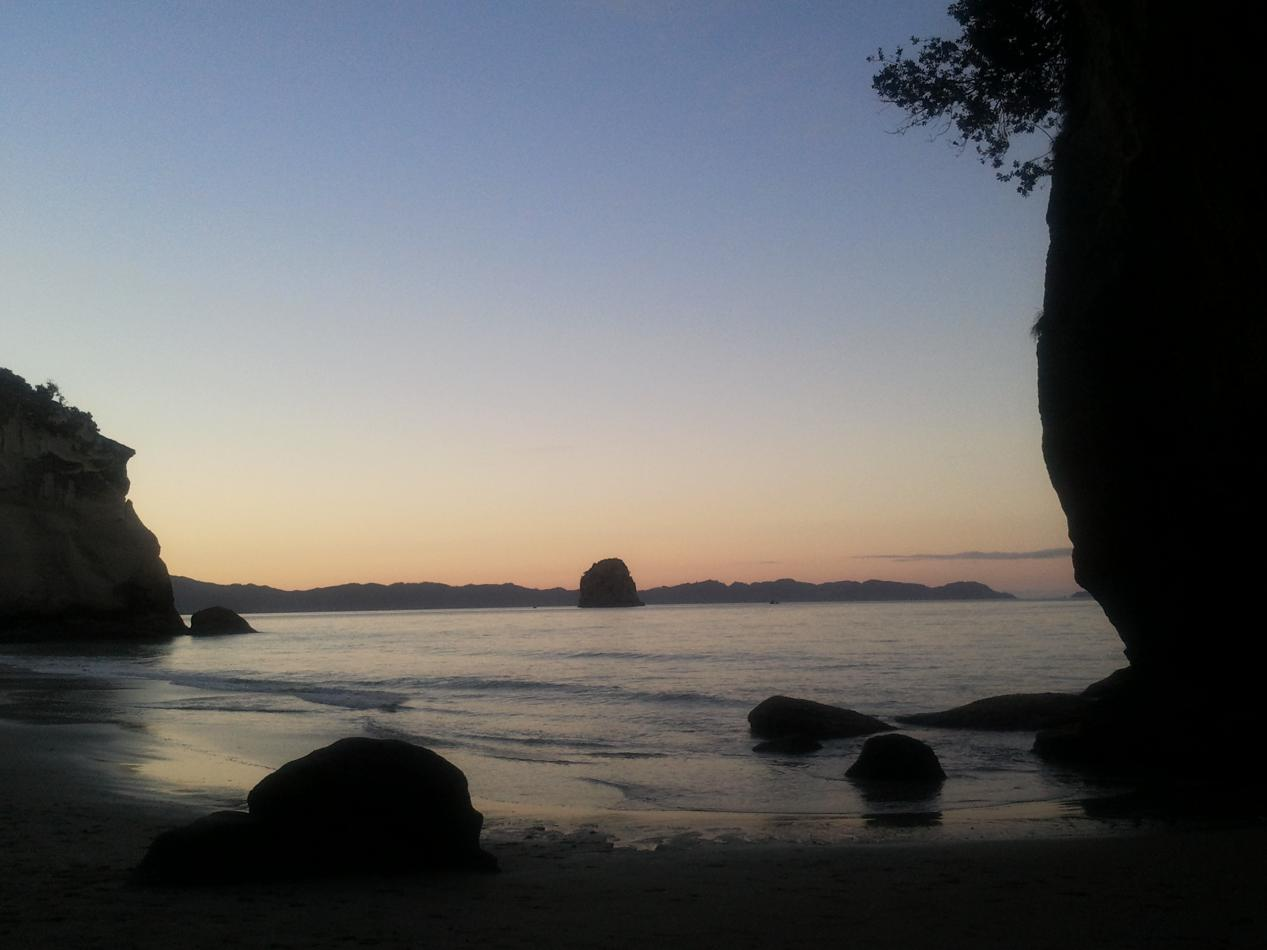
The Coromandel Peninsula is a haven for nature lovers, renowned for its stunning beaches and lush landscapes. Visit Hot Water Beach, where you can dig your own hot pool in the sand at low tide. Cathedral Cove, with its iconic natural archway and crystal-clear waters, is perfect for a scenic hike and a refreshing swim. The Coromandel’s breathtaking scenery and unique attractions make it a highlight of any North Island itinerary.
- Hobbiton
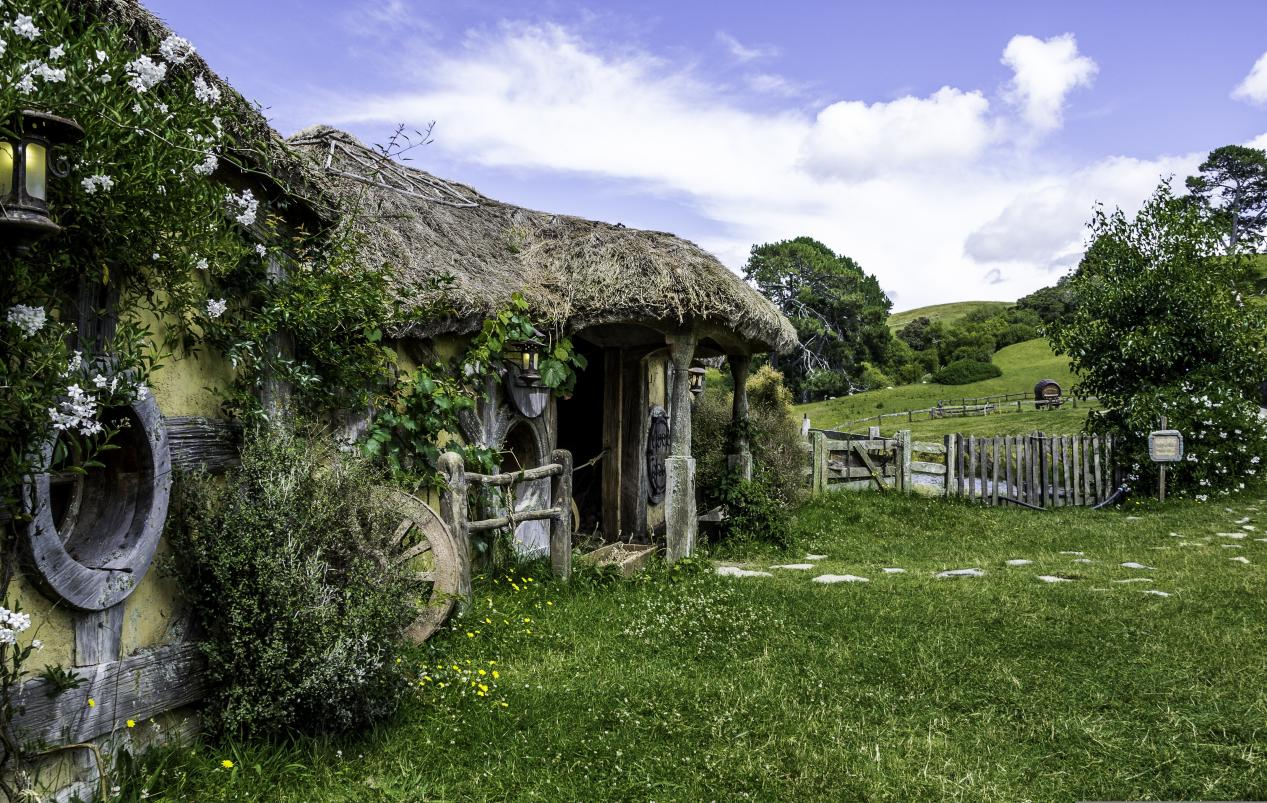
Step into the magical world of Middle-earth with a visit to Hobbiton, the iconic film set from “The Lord of the Rings” and “The Hobbit” trilogies. Wander through the charming hobbit holes, and enjoy a drink at the Green Dragon Inn. This meticulously preserved set offers an immersive experience that transports you straight into the movies, making it a must-visit for fans and families alike.
- Rotorua

Rotorua is a geothermal wonderland and a hub of Maori culture. Explore the enchanting Waitomo Glowworm Caves, where thousands of glowworms illuminate the underground caverns. Relax in the therapeutic mud baths at Hell’s Gate, New Zealand’s only geothermal mud spa. At Te Puia, immerse yourself in Maori traditions with cultural performances and traditional crafts. Rotorua’s unique blend of natural wonders and cultural experiences makes it an unforgettable destination.
- Wellington
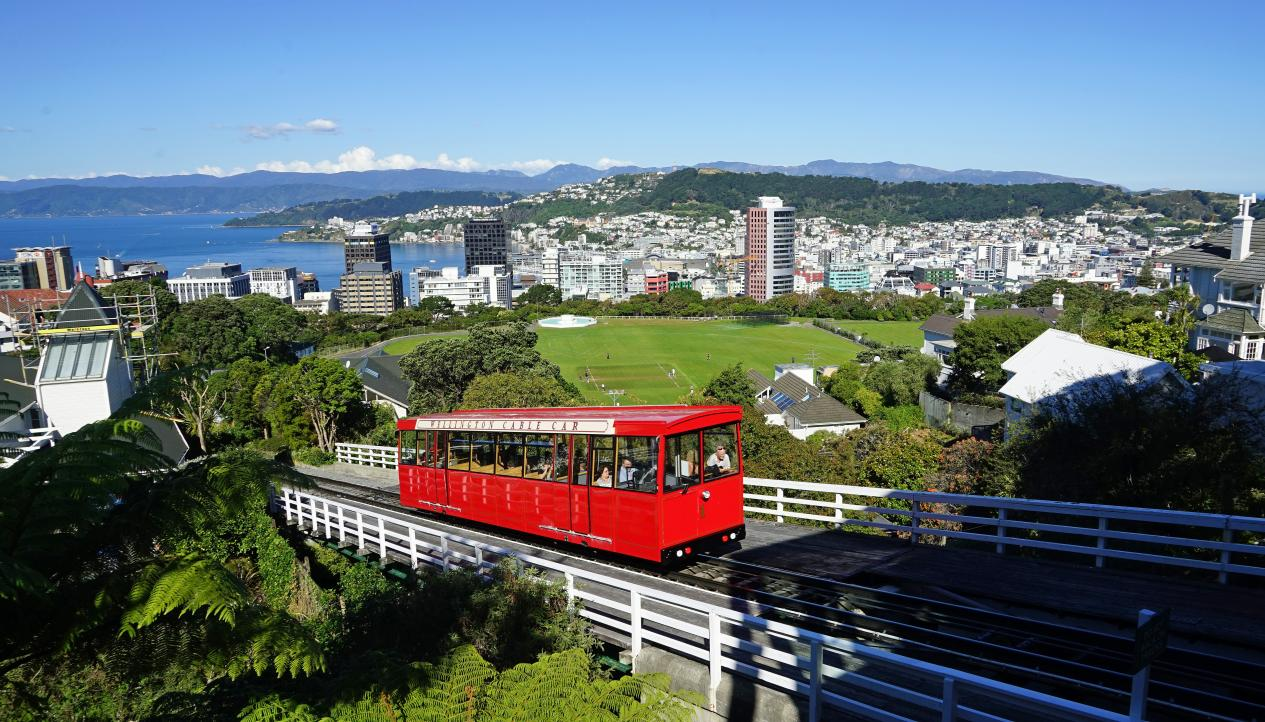
Wellington, the capital city of New Zealand, is a cultural and creative hub. Visit Weta Workshop, the world-renowned special effects company, for an insider’s look at movie magic, complete with exclusive props and costumes. Take a ride on the Wellington Cable Car to the Botanic Garden for stunning views of the city. Wellington’s vibrant arts scene and innovative spirit make it the perfect finale to your North Island adventure.
South Island road trips
- Christchurch
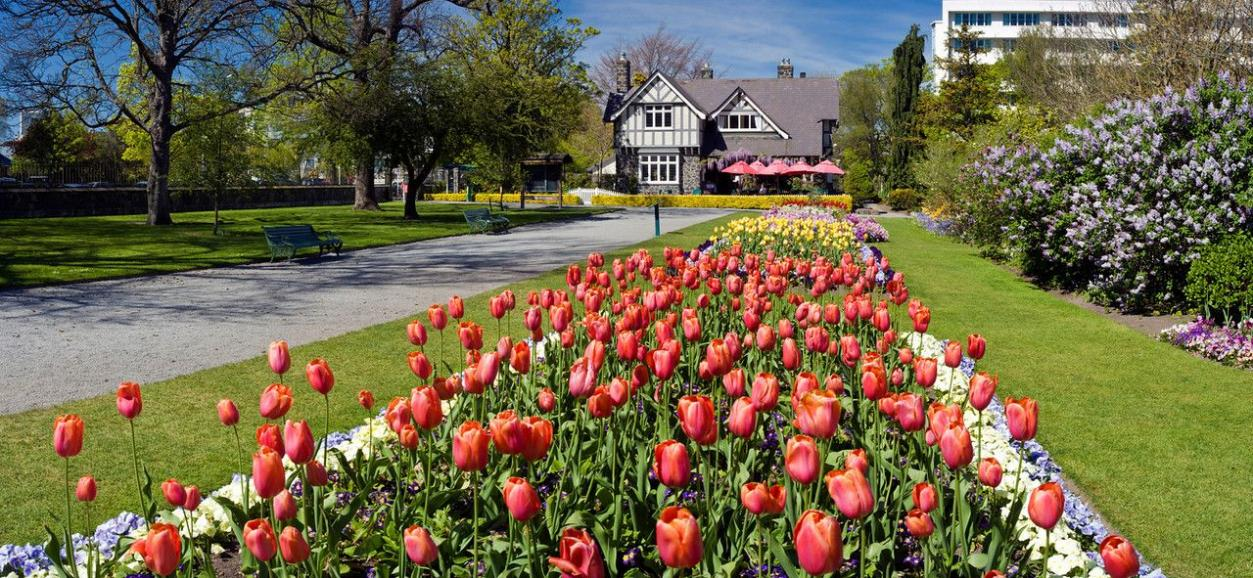
Christchurch, the Garden City, beautifully combines English charm with modern resilience. Despite the 2011 earthquake, it remains the South Island’s vibrant hub. Wander through the expansive Christchurch Botanic Gardens, perfect for a leisurely stroll or picnic by the Avon River. The Canterbury Museum offers fascinating insights into New Zealand’s history and Maori culture. The innovative container malls in the city center symbolize hope and creativity amidst the earthquake ruins. Don’t miss the International Antarctic Centre for an interactive glimpse into the icy continent.
- Franz/Fox Glacier
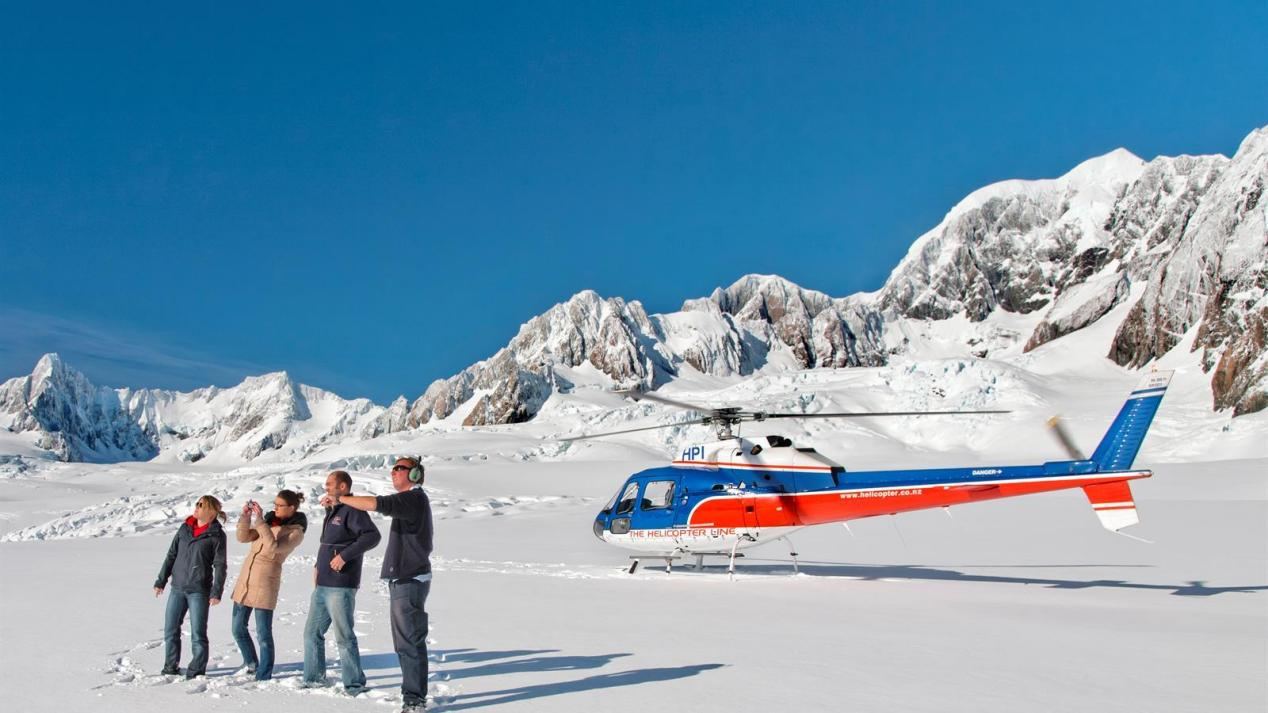
The Franz Josef and Fox Glaciers are remnants of the last Ice Age, offering a unique opportunity for close-up exploration. These massive, pristine glaciers provide a tranquil base with stunning lake views and serene surroundings. Walking on these ancient ice formations, surrounded by towering peaks, feels like stepping back in time. The small towns of Franz Josef and Fox Glacier are perfect for relaxing and soaking in the natural beauty of the area.
- Wanaka
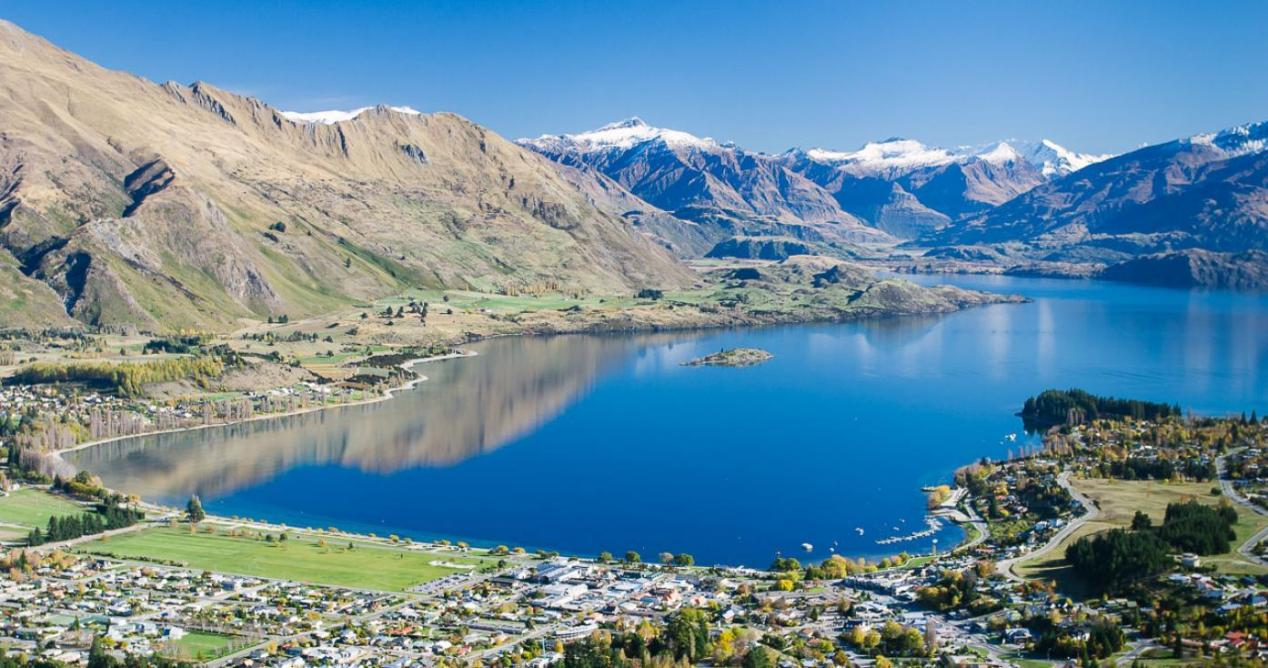
Wanaka, a charming lakeside town, offers stunning scenery and a relaxed atmosphere with fewer crowds than Queenstown. The serene beauty of Lake Wanaka, framed by the majestic Southern Alps, provides a perfect backdrop for relaxation and exploration. Just a short drive away, Arrowtown adds a historical dimension with its well-preserved 19th-century gold mining buildings and fascinating stories of Chinese miners. The combination of Wanaka’s natural splendor and Arrowtown’s historical charm makes this area a must-visit destination.
- Queenstown
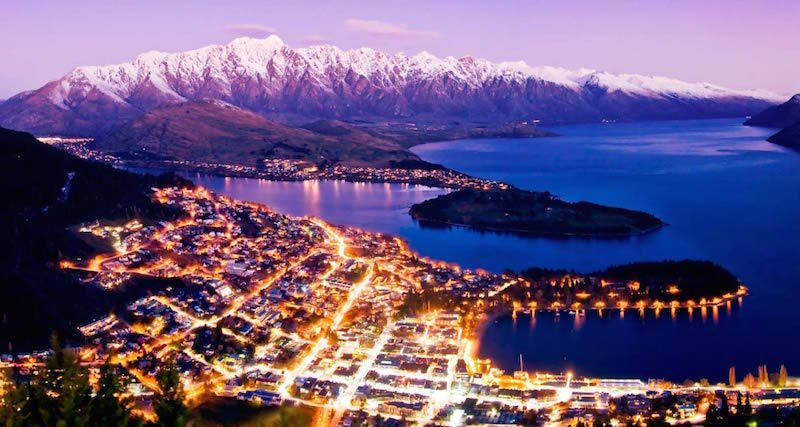
Queenstown, the adventure capital of the world, is set against the stunning backdrop of Lake Wakatipu and the Remarkables mountain range. This vibrant town offers a plethora of adrenaline-pumping activities, from bungee jumping off bridges to jet boating through narrow canyons. For a more relaxed experience, take a cruise on the historic TSS Earnslaw steamship to Walter Peak High Country Farm, where you can enjoy a traditional sheep shearing demonstration. The Skyline Gondola provides breathtaking views and a chance to dine at the mountaintop restaurant. Queenstown’s blend of natural beauty and thrilling activities makes it an essential stop on any South Island itinerary.
- Milford Sound
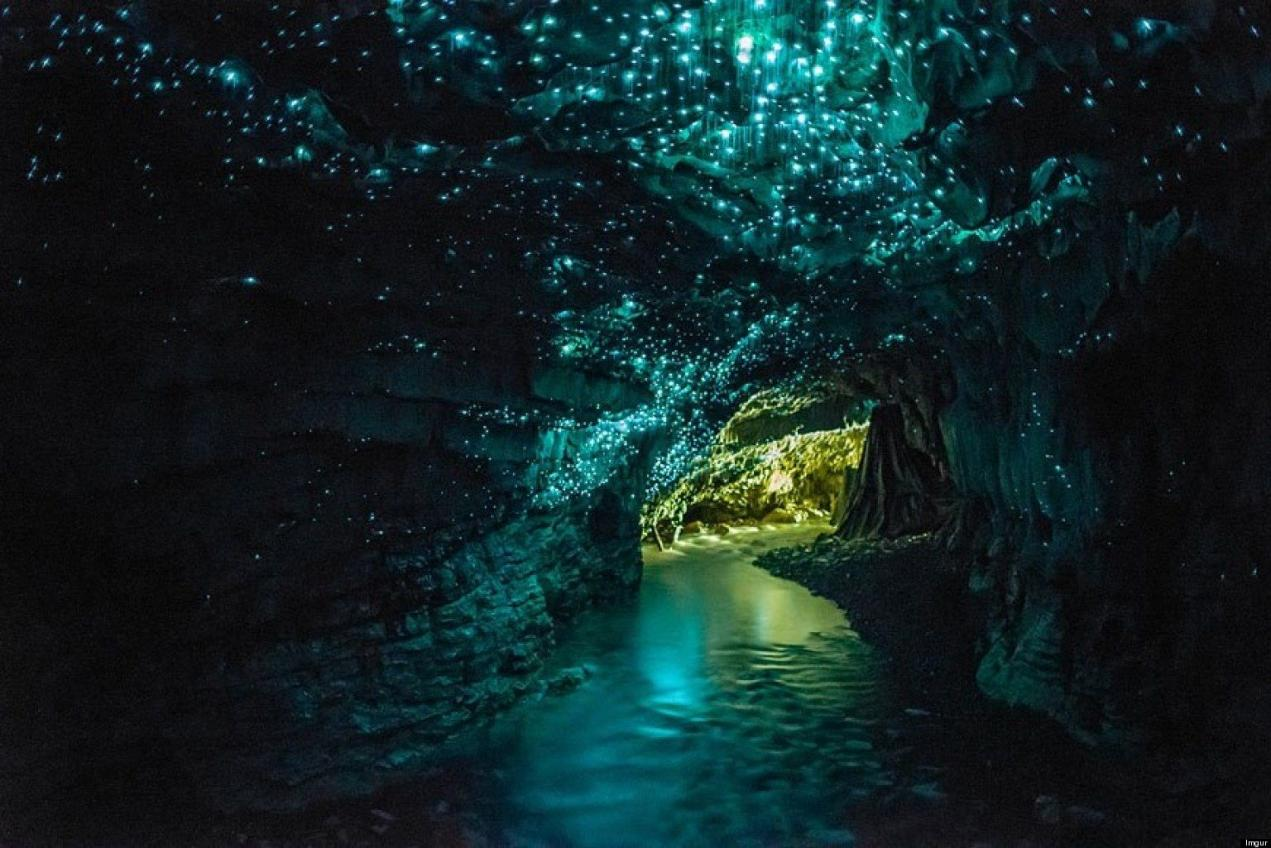
Milford Sound, a UNESCO World Heritage site, is a breathtaking fjord extending 22 kilometers inland from the Tasman Sea. Surrounded by towering peaks, lush rainforests, and cascading waterfalls, Milford Sound offers a dramatic and awe-inspiring landscape. A scenic cruise reveals dolphins, seals, and penguins in their natural habitat. After exploring the fjord, visit Te Anau for a magical glowworm cave tour, where thousands of glowworms illuminate the dark caverns like a starry sky.
- Dunedin
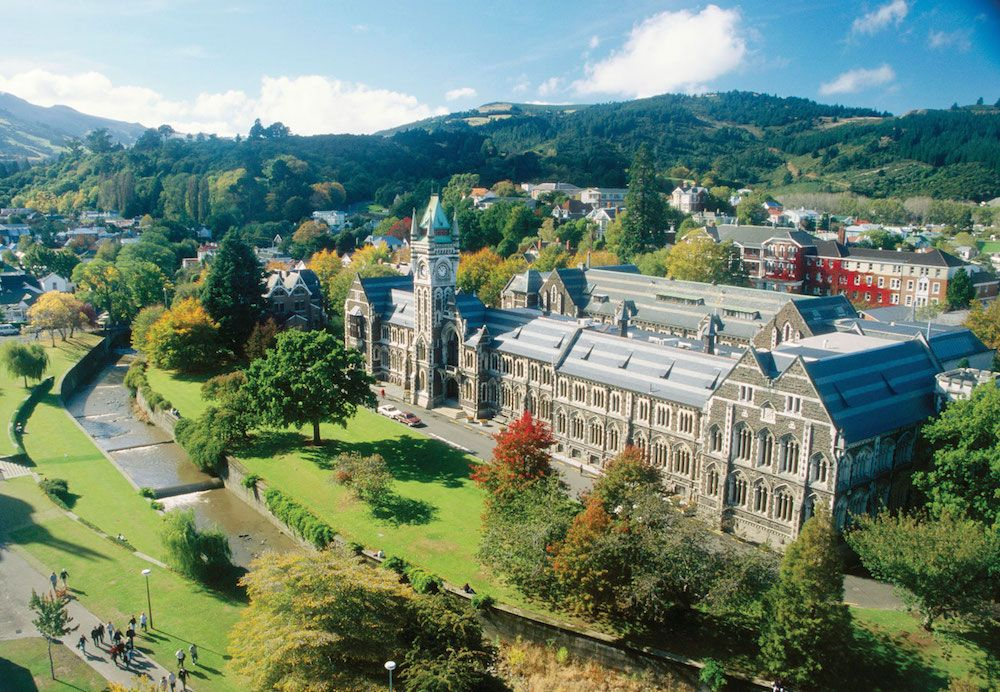
Dunedin, the second-largest city on the South Island, boasts a rich history and Victorian and Edwardian architecture. The city’s Scottish heritage is evident in its grand buildings like the Dunedin Railway Station and Larnach Castle. The Otago Peninsula offers unique wildlife, including albatrosses, sea lions, and the rare yellow-eyed penguin. Dunedin’s blend of historic charm and natural beauty makes it a fascinating stop.
- Oamaru
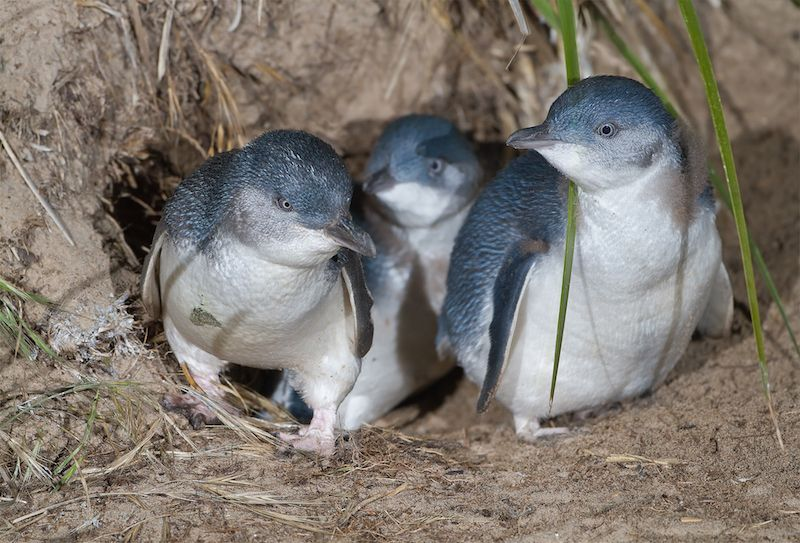
Oamaru is famous for its Victorian architecture and the adorable little blue penguins that return to shore each evening. Spend the night in Oamaru to witness these tiny penguins waddle up the beach to their nesting sites. The town’s historic precinct, with its well-preserved 19th-century buildings, offers a charming glimpse into the past. Oamaru’s unique blend of history and wildlife makes it a delightful stop on your South Island adventure.
- Mt. Cook & Tekapo
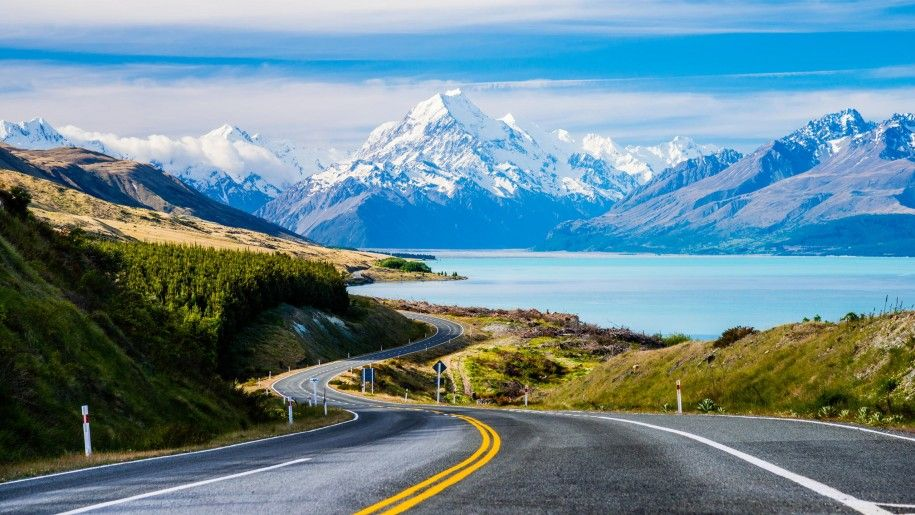
Mount Cook National Park is a jewel in New Zealand’s crown, offering a stunning array of landscapes, including snow-capped peaks, glaciers, rivers, and alpine meadows. The park’s vast and colorful scenery is best appreciated from the various viewpoints and short hiking trails. Nearby Lake Tekapo is equally captivating, with its turquoise waters and the iconic Church of the Good Shepherd. As the world’s first Dark Sky Reserve, Tekapo offers unparalleled stargazing opportunities, making it a must-visit for astronomy enthusiasts.
Useful Website and Numbers
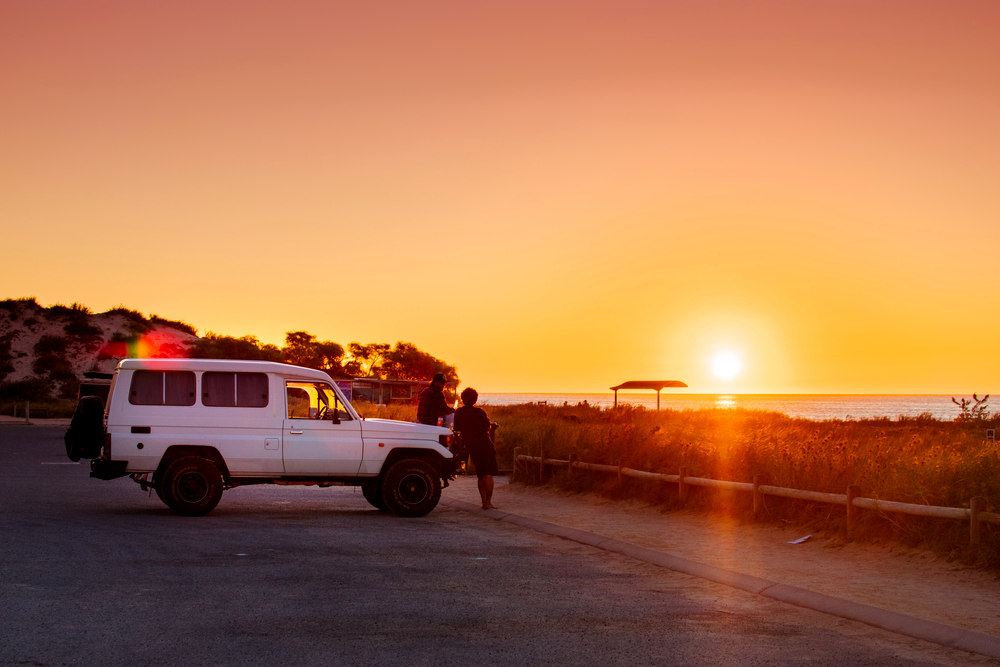
- New Zealand’s official tourism website: Welcome to New Zealand | Official site for Tourism New Zealand (newzealand.com)
- Police, Fire, Ambulance: 111
- Roadside Assistance Numbers:
AA (The New Zealand Automobile Association Inc.): 0800 500 222
NZRA (New Zealand Roadside Assistance Limited): 0508 697 623
- You can also call your car rental company:
ACE Rental Cars: 0800 502 277 / +64 9 367 6350
AVIS: (64) 9-379 2650 / 09 373 5830
Alamo: 98703330
Apex: (09) 307 1063 / 0800 737 009
Autounion: 0064 99490944
Bargain Rental Cars: 0800 566 701 / 0800 566 701
Budget: 09 976 2270
CARWIZ: 64211802323
Discount car rentals: 0800 1795 1795 / (+64) 9 275 4085
Dollar: 0800243789
Drive nz: 0800 374836
Ezu: 0064-221825752 / +64 220953795
Europcar: +64 (0) 9 3795080
Ezi: +64 9 377 0867 / 0800 545 000
GO Rentals: +64 9 525 7321
Great rentals: 0064 95800588 / 0064 276884888
Hertz: 09 3676350
MODE: +64 09 373 3925
Routes: 6409275006
SCOTTIES: +64 9 3033912
SIXT: +64-98694666
SNAP: +64 800288699 / 6492752438
TOKYO RD RENTALS: +64 2109140101 / +64 211579864
Thrifty: 0800737070
YESAWAY: +64 95800588 / +64 276884888
Yes rentals: +6434202878 / +6434202878

